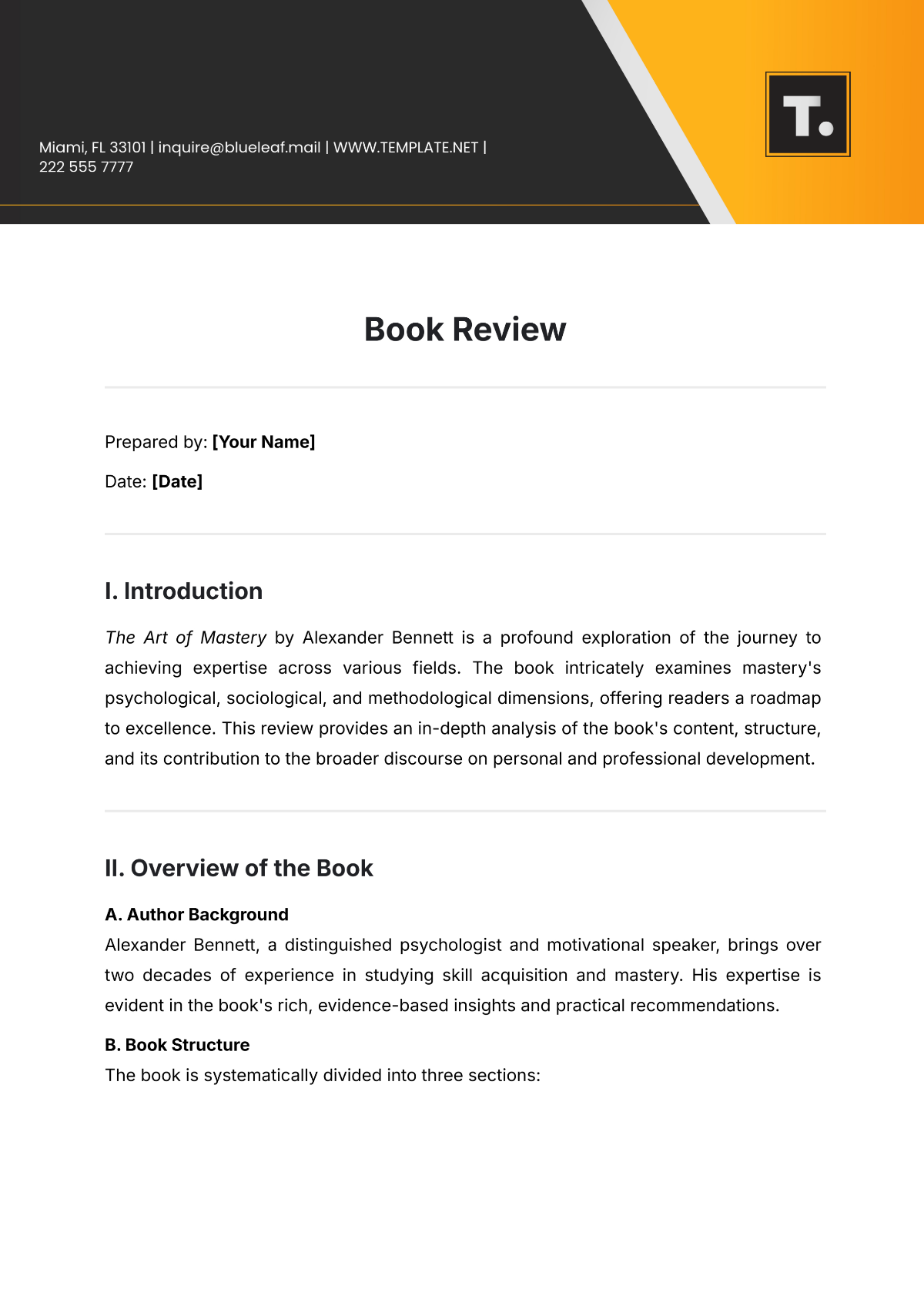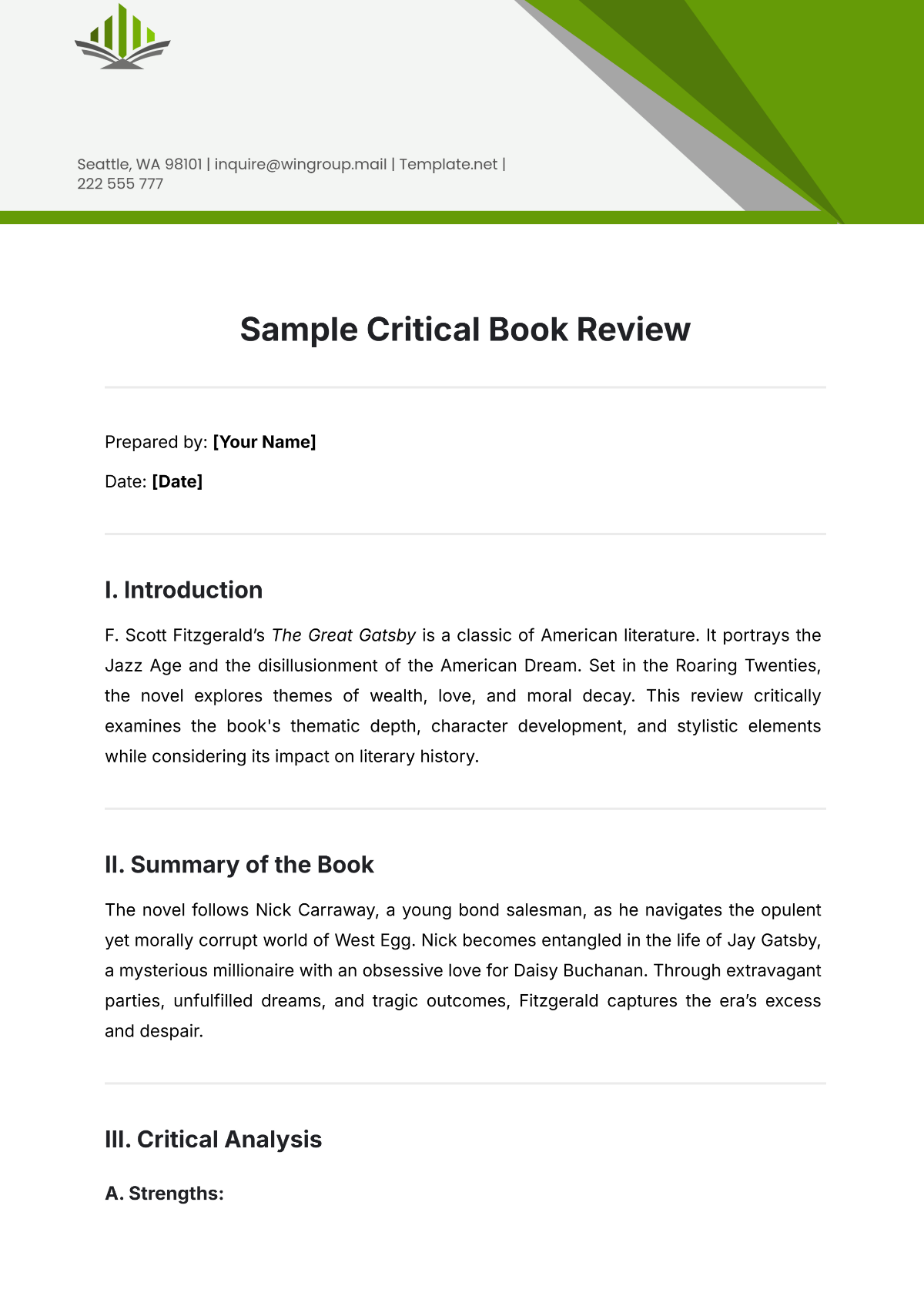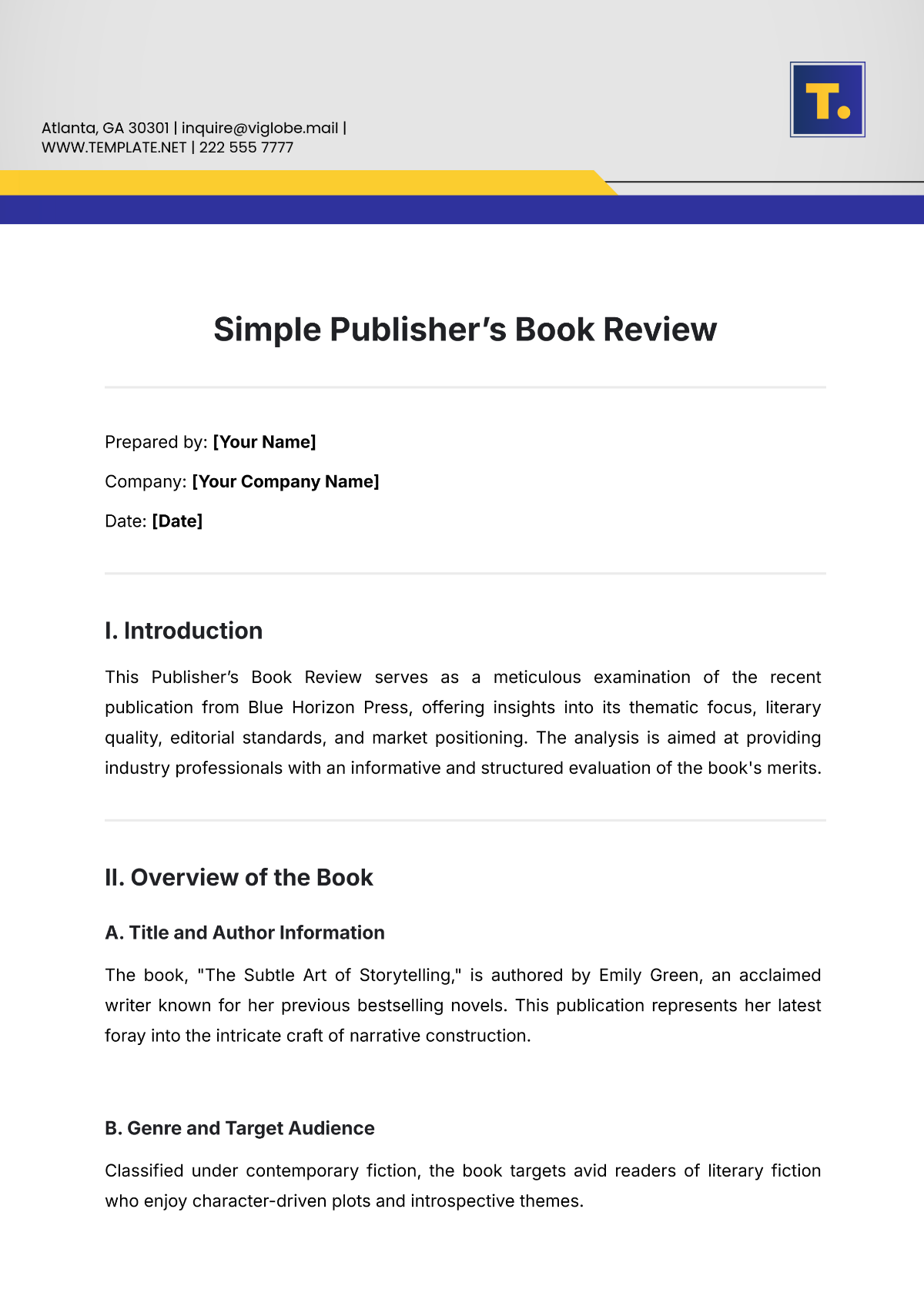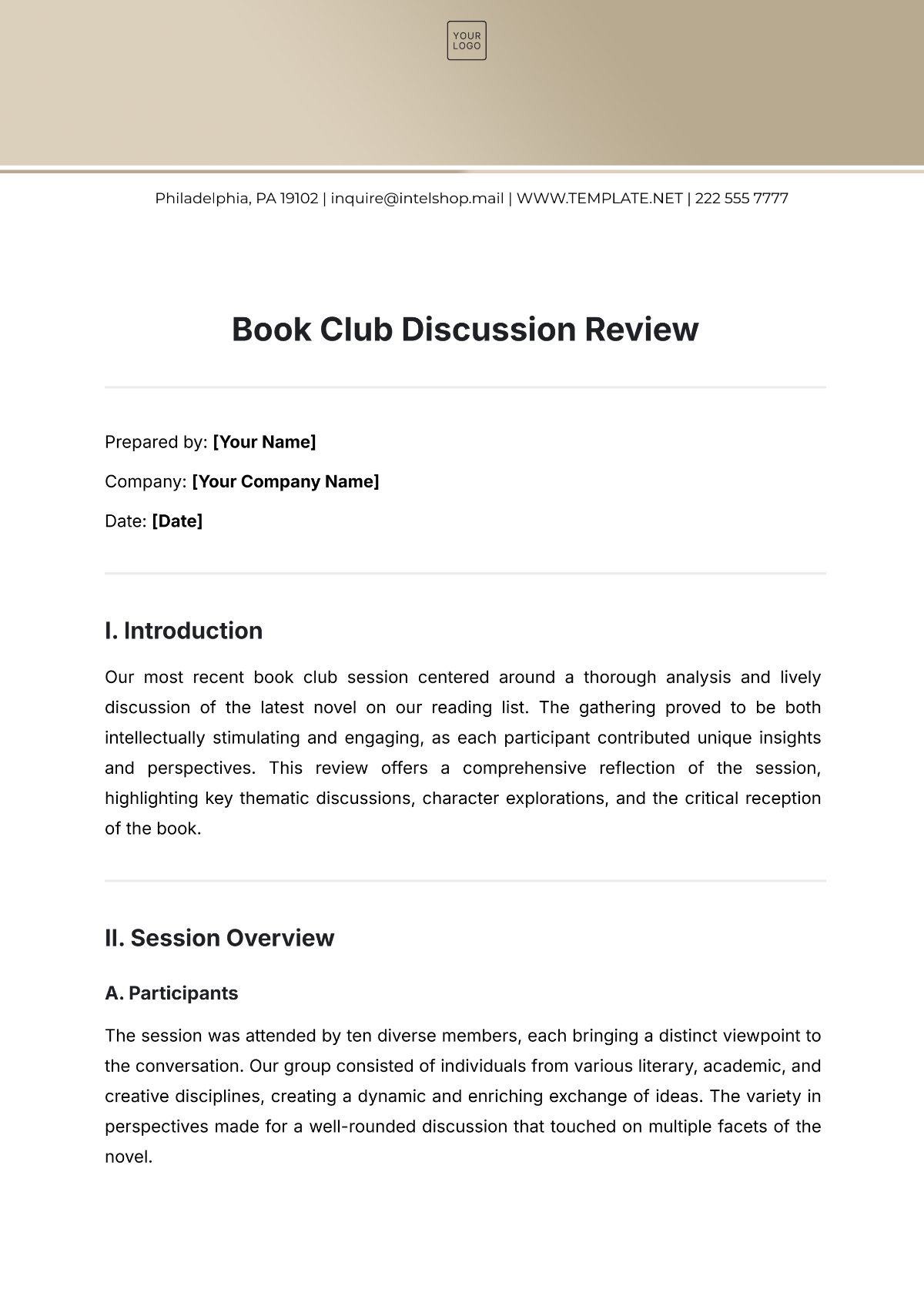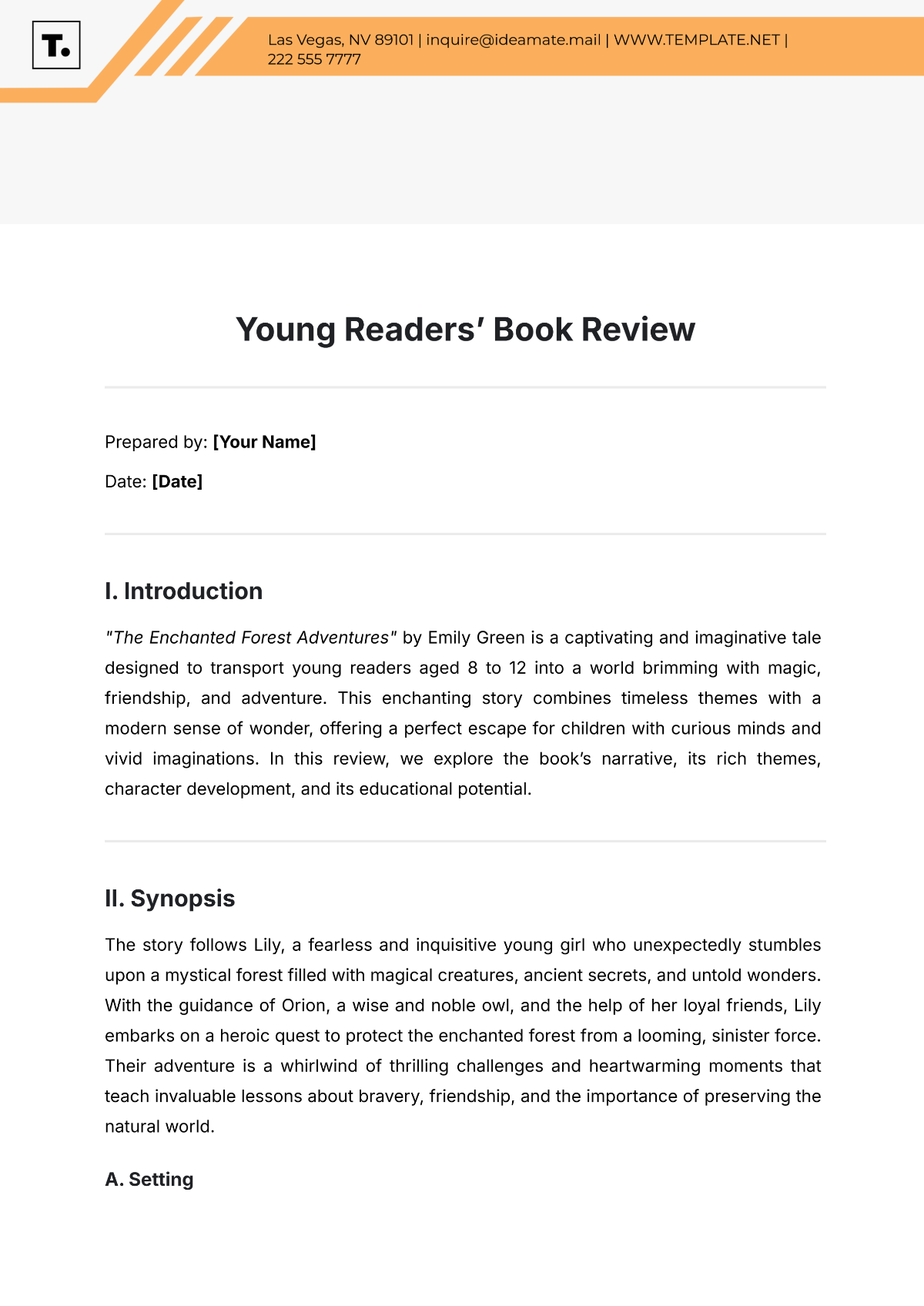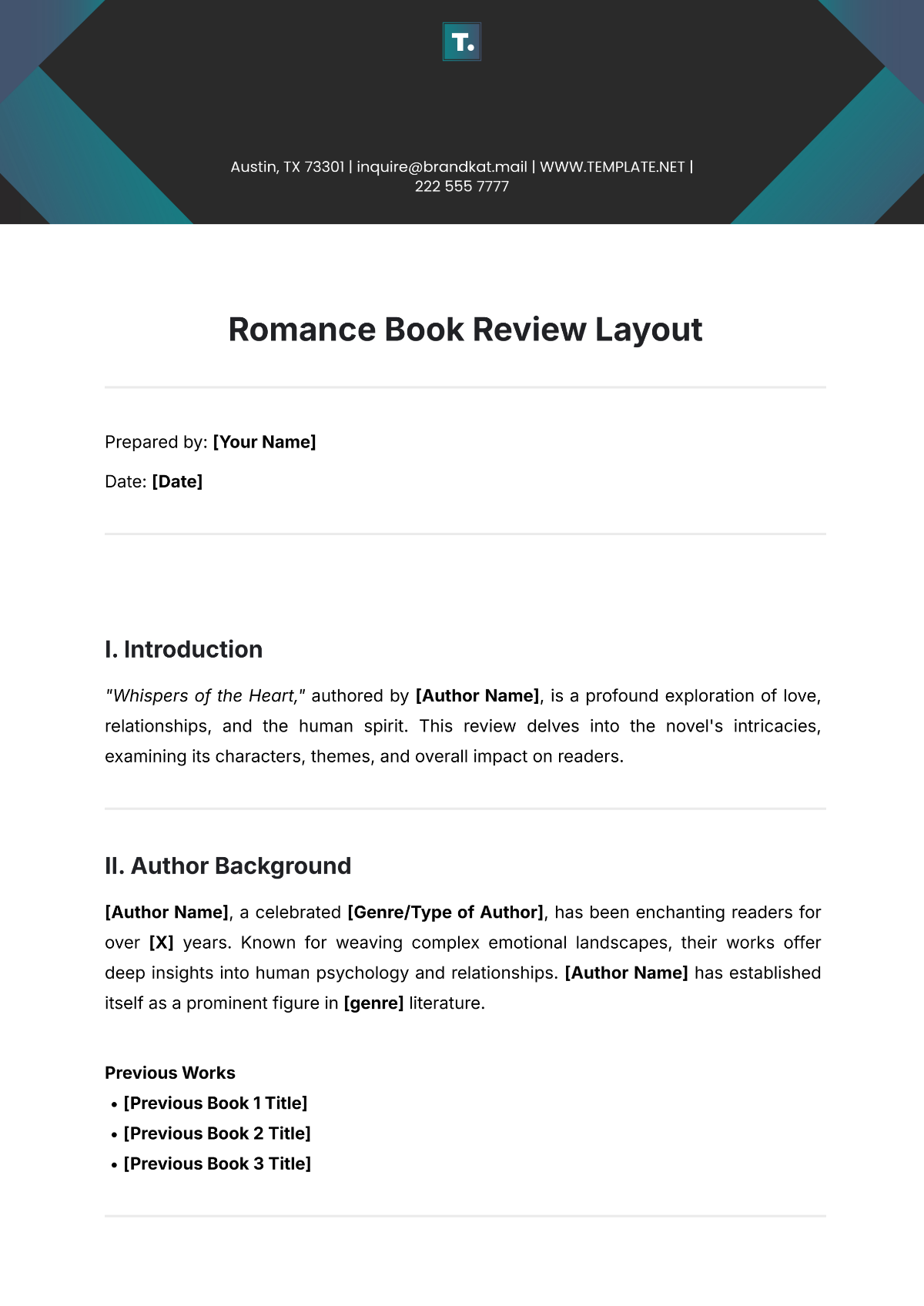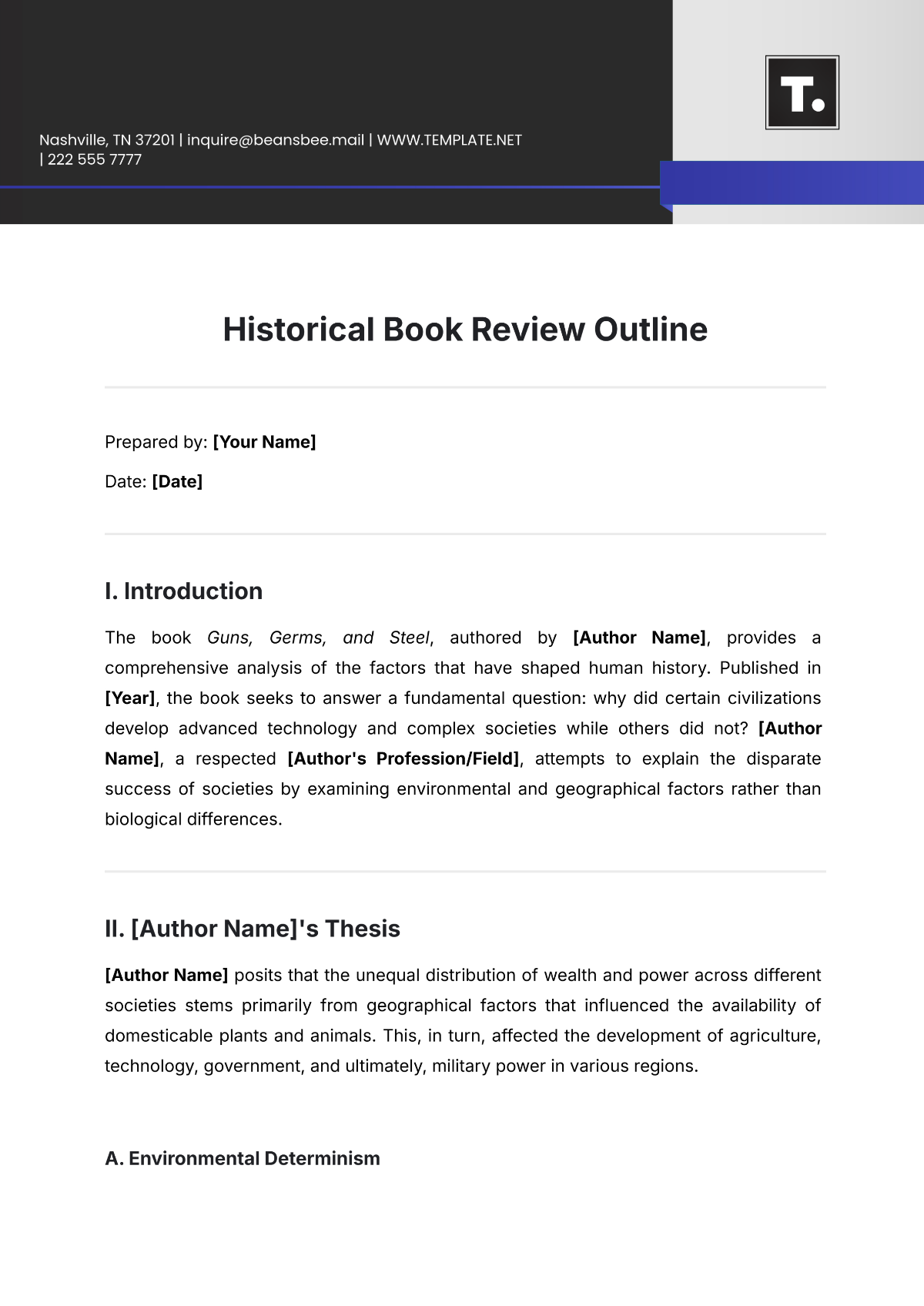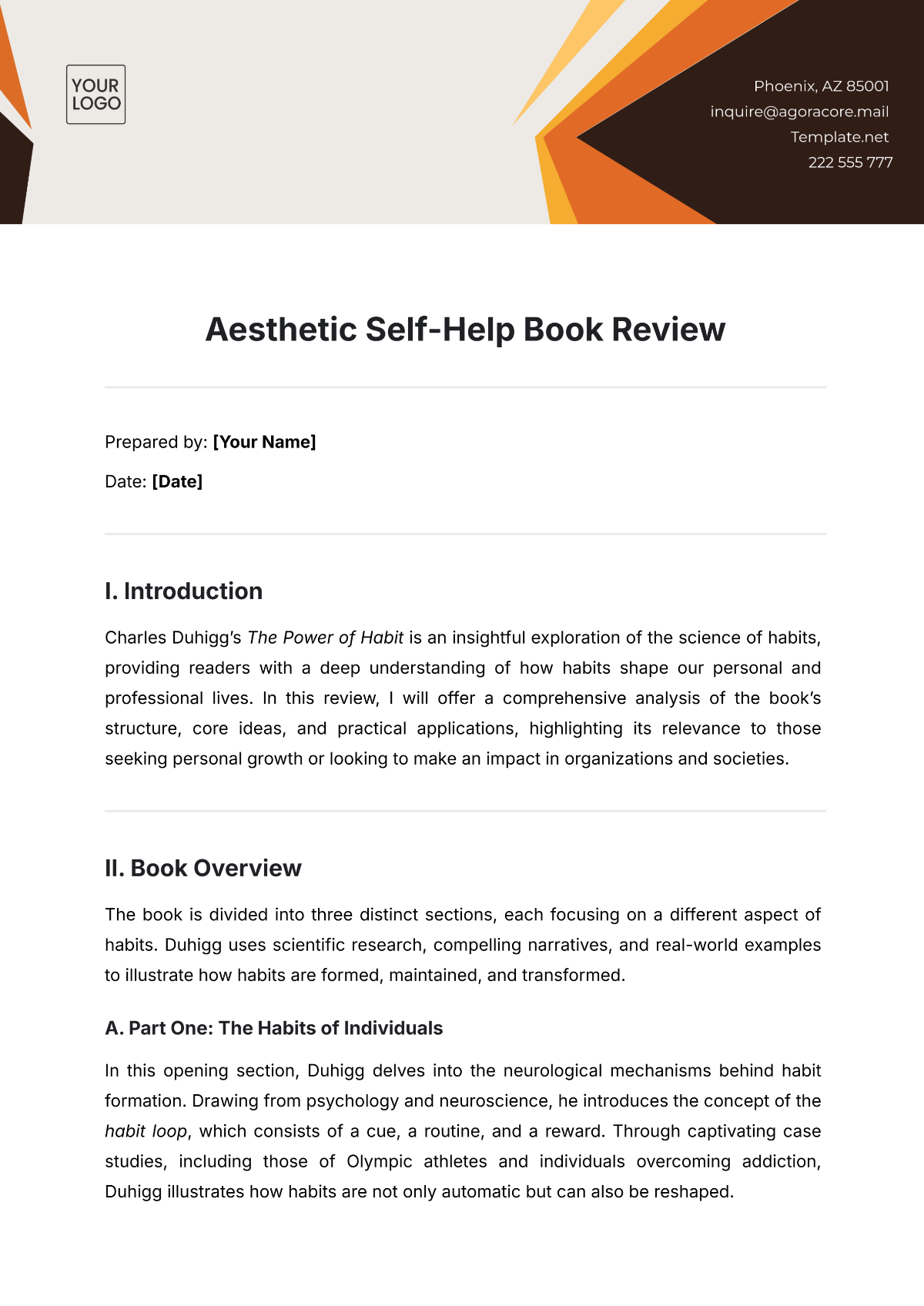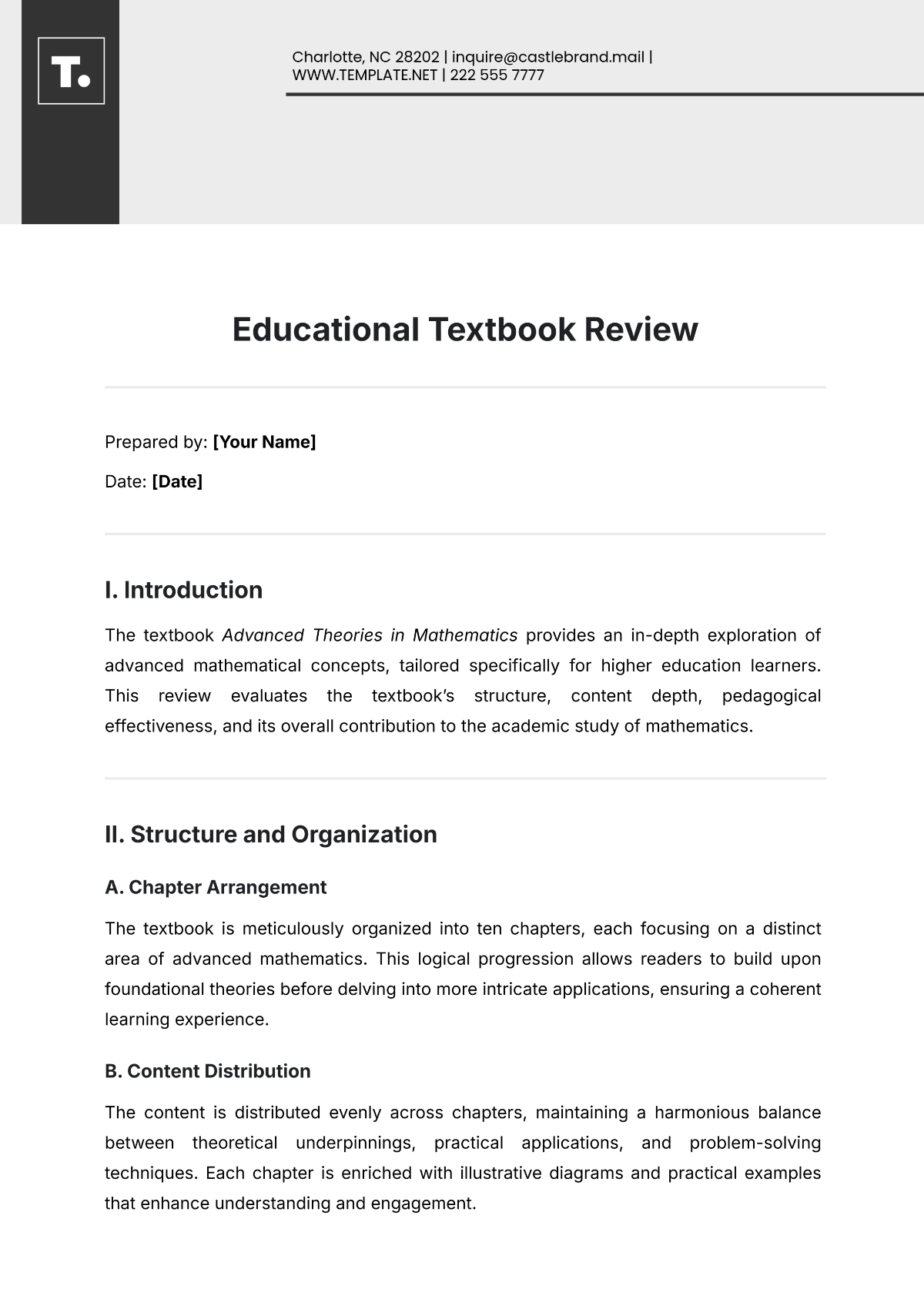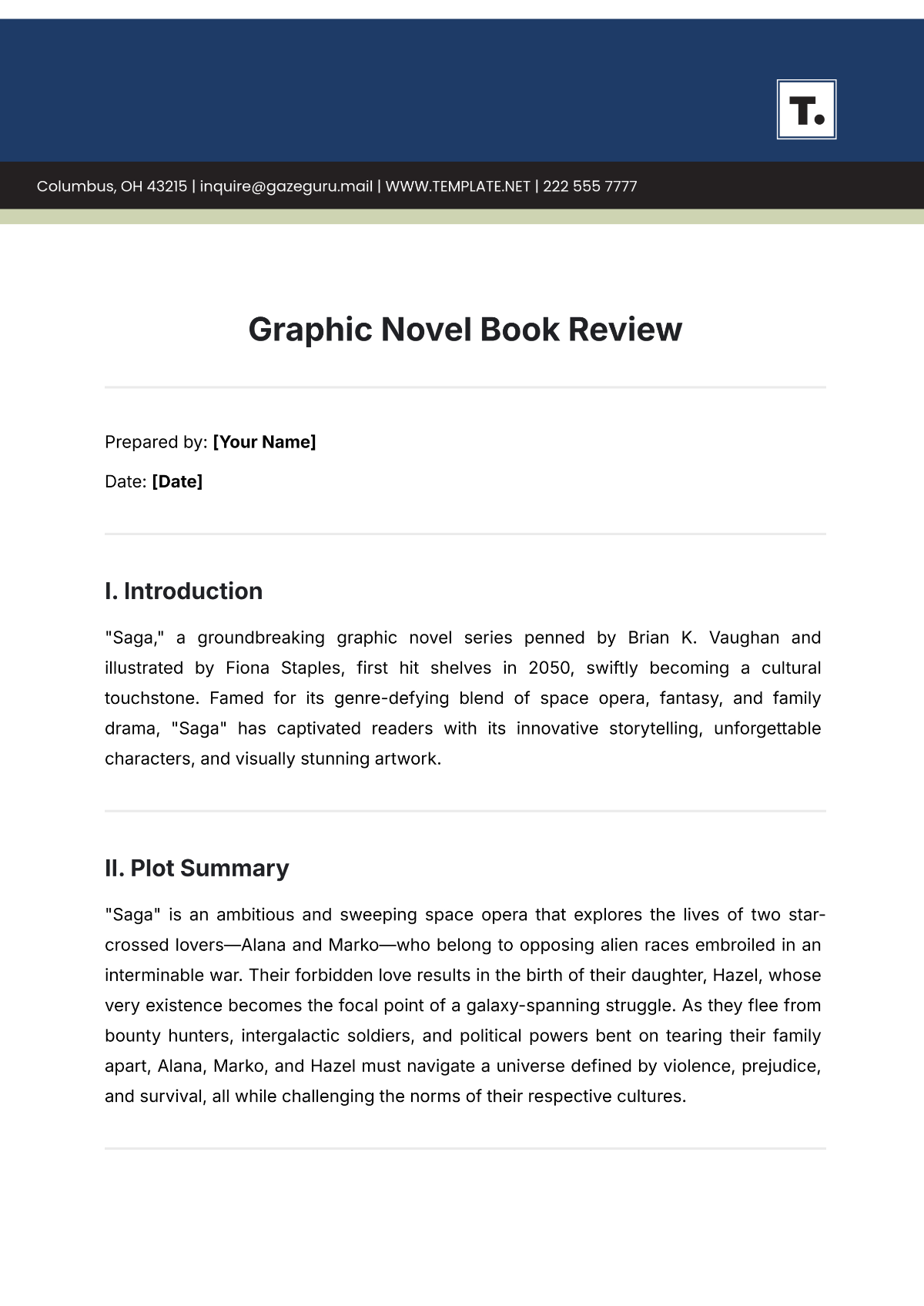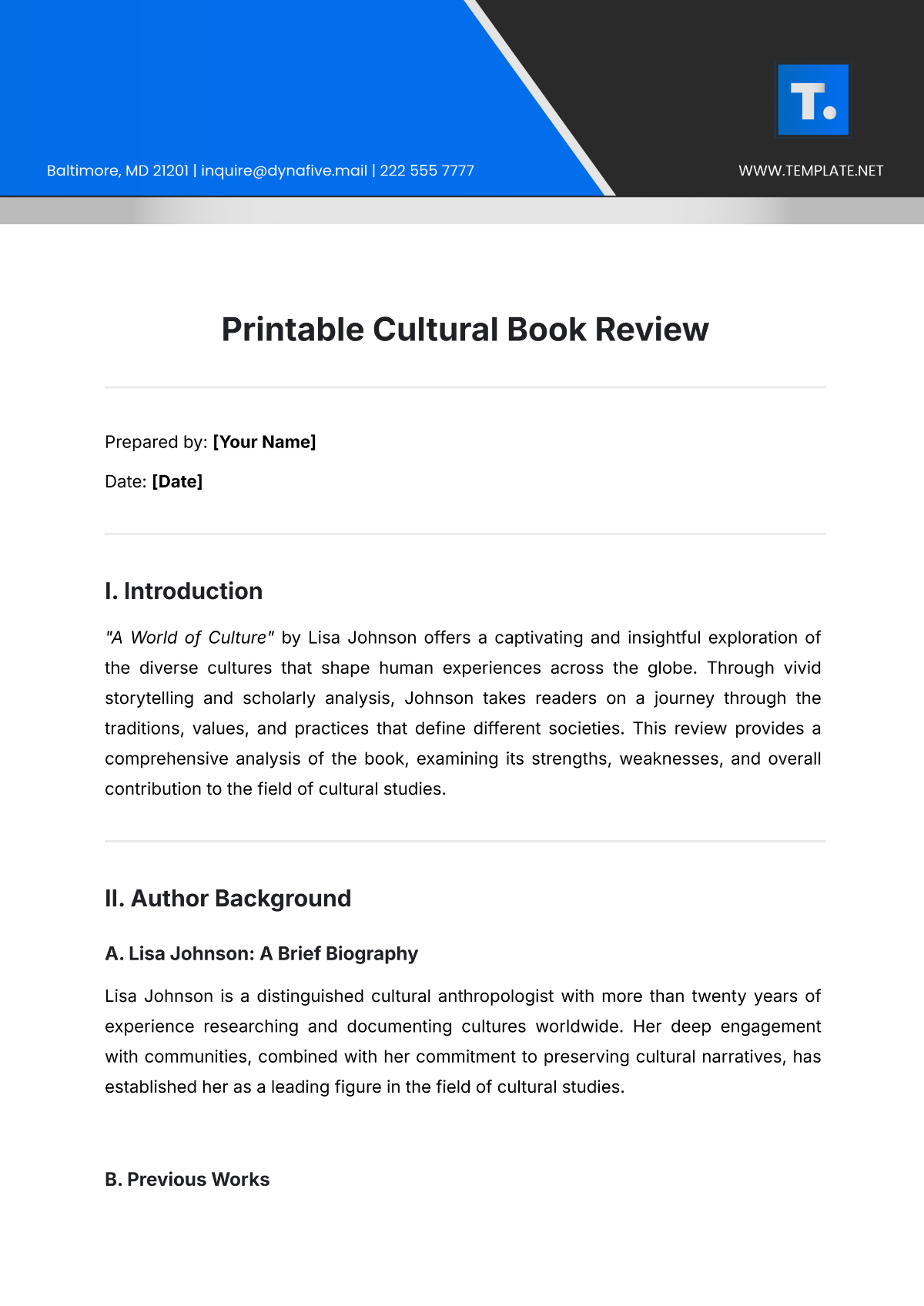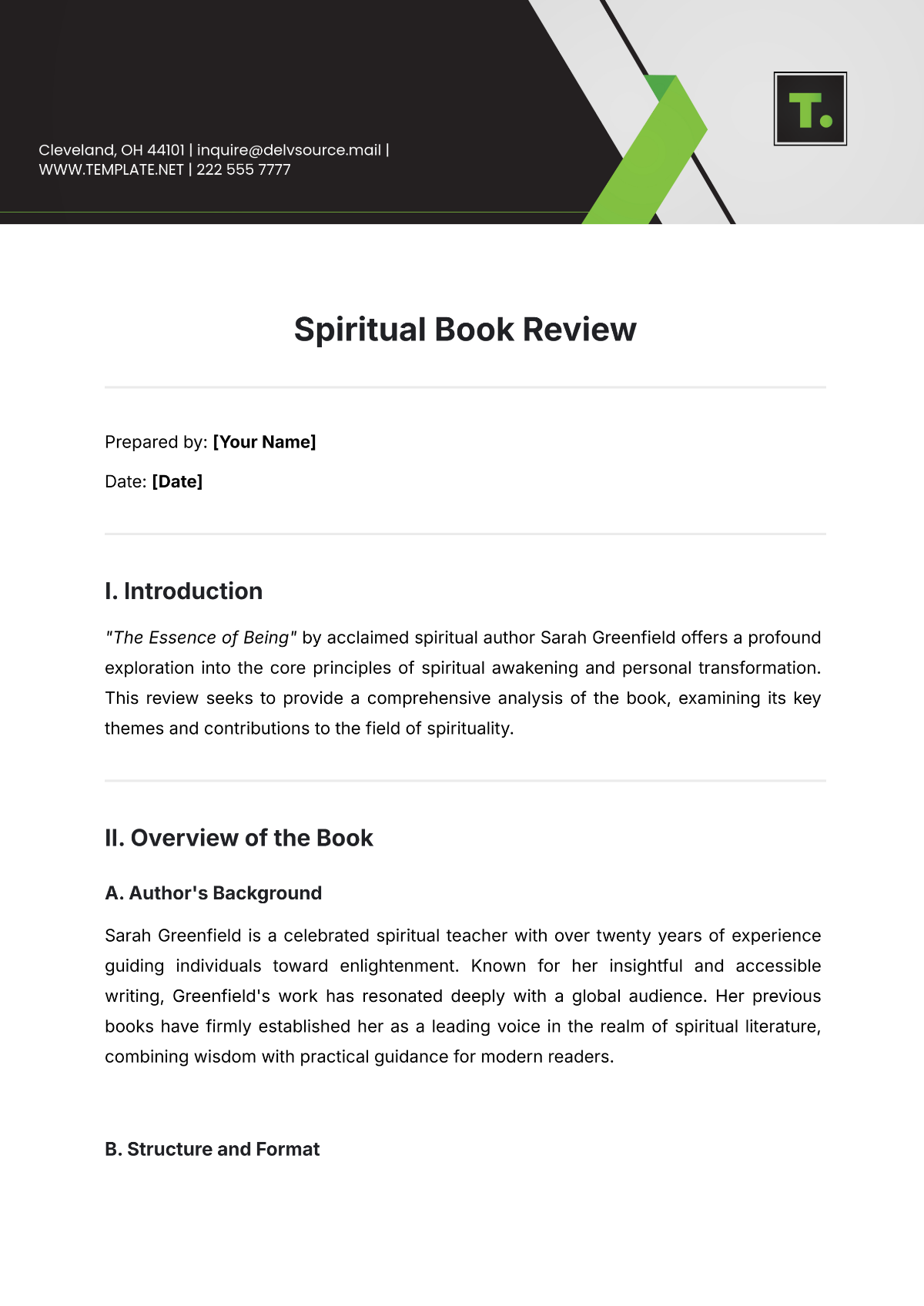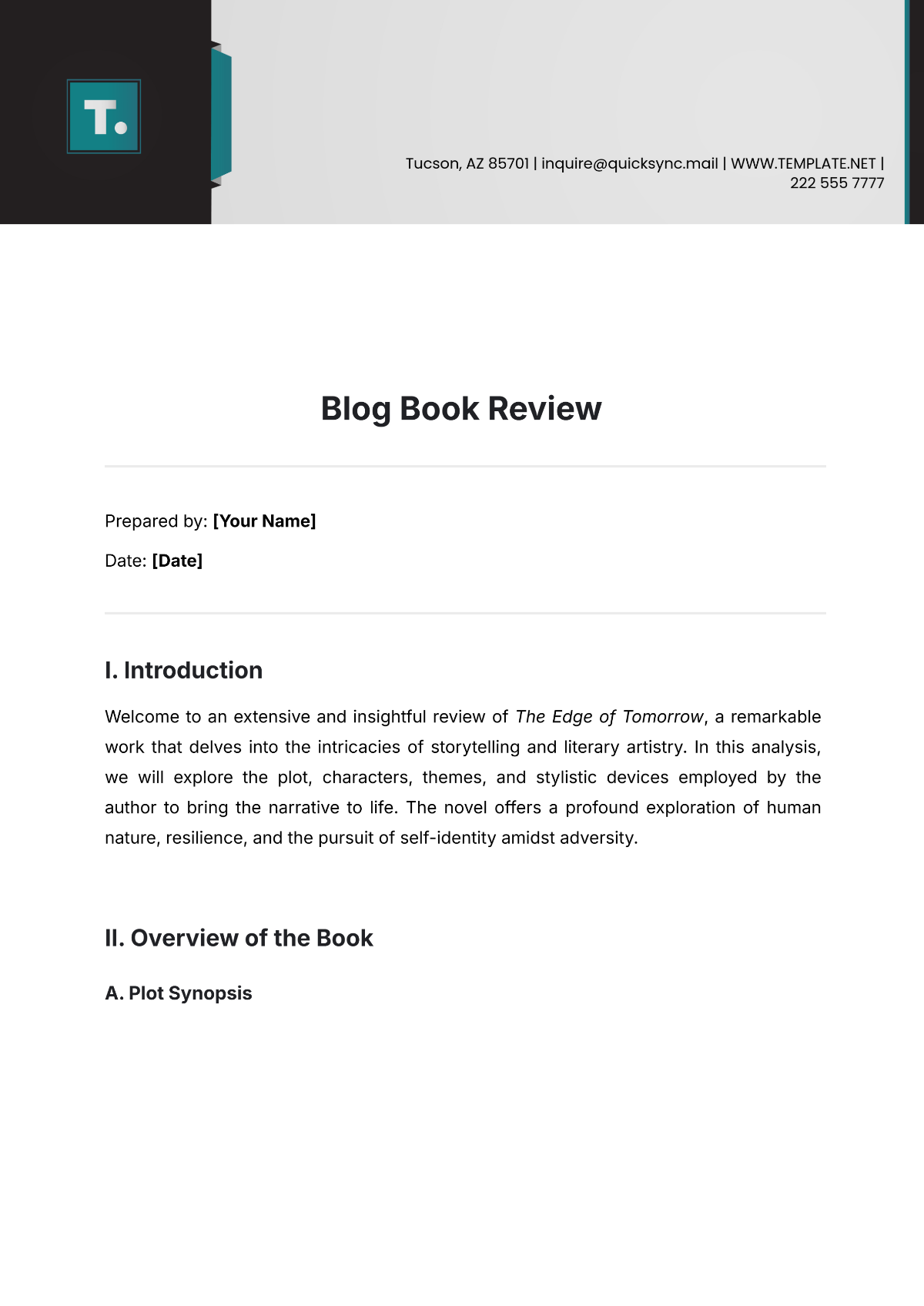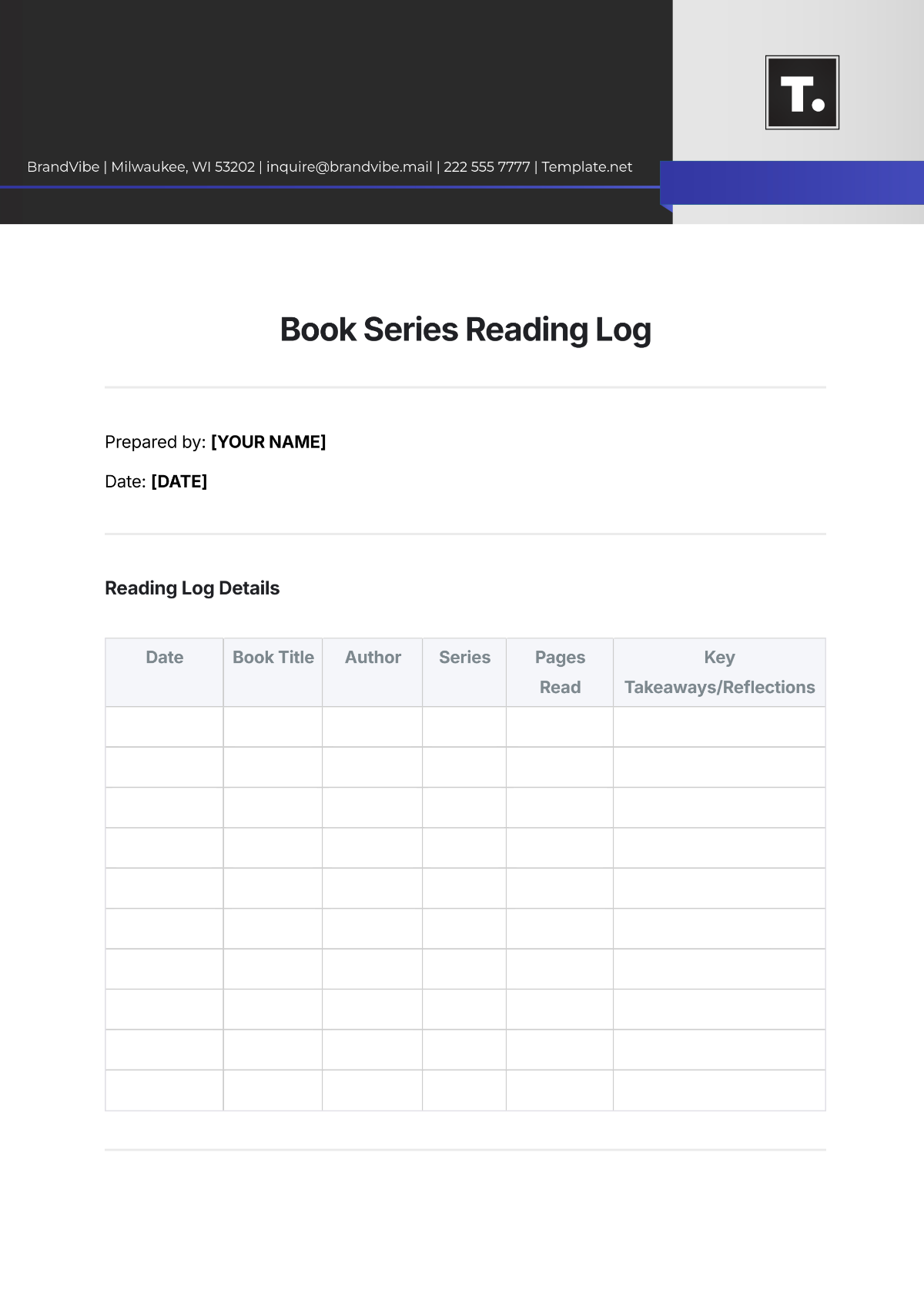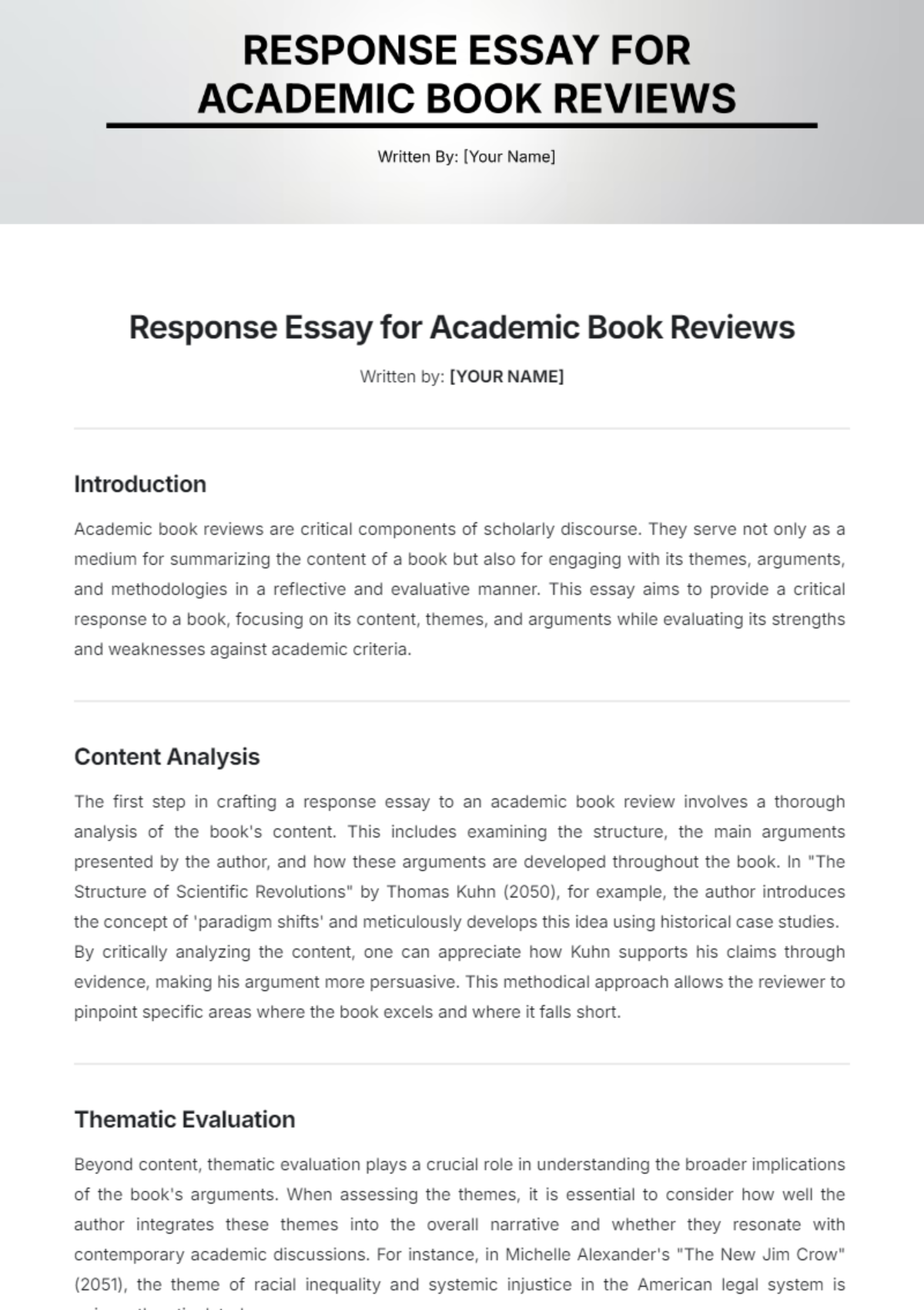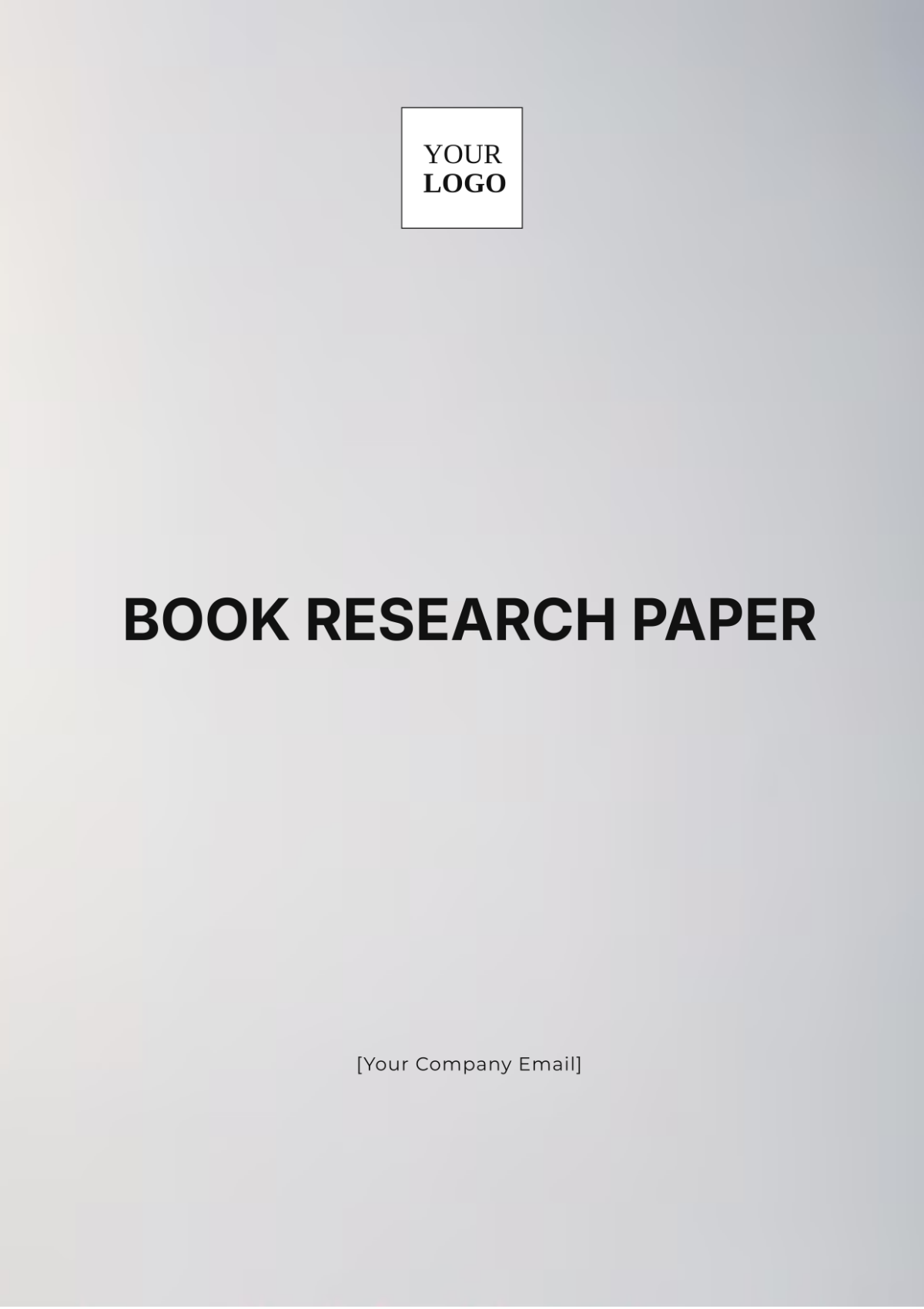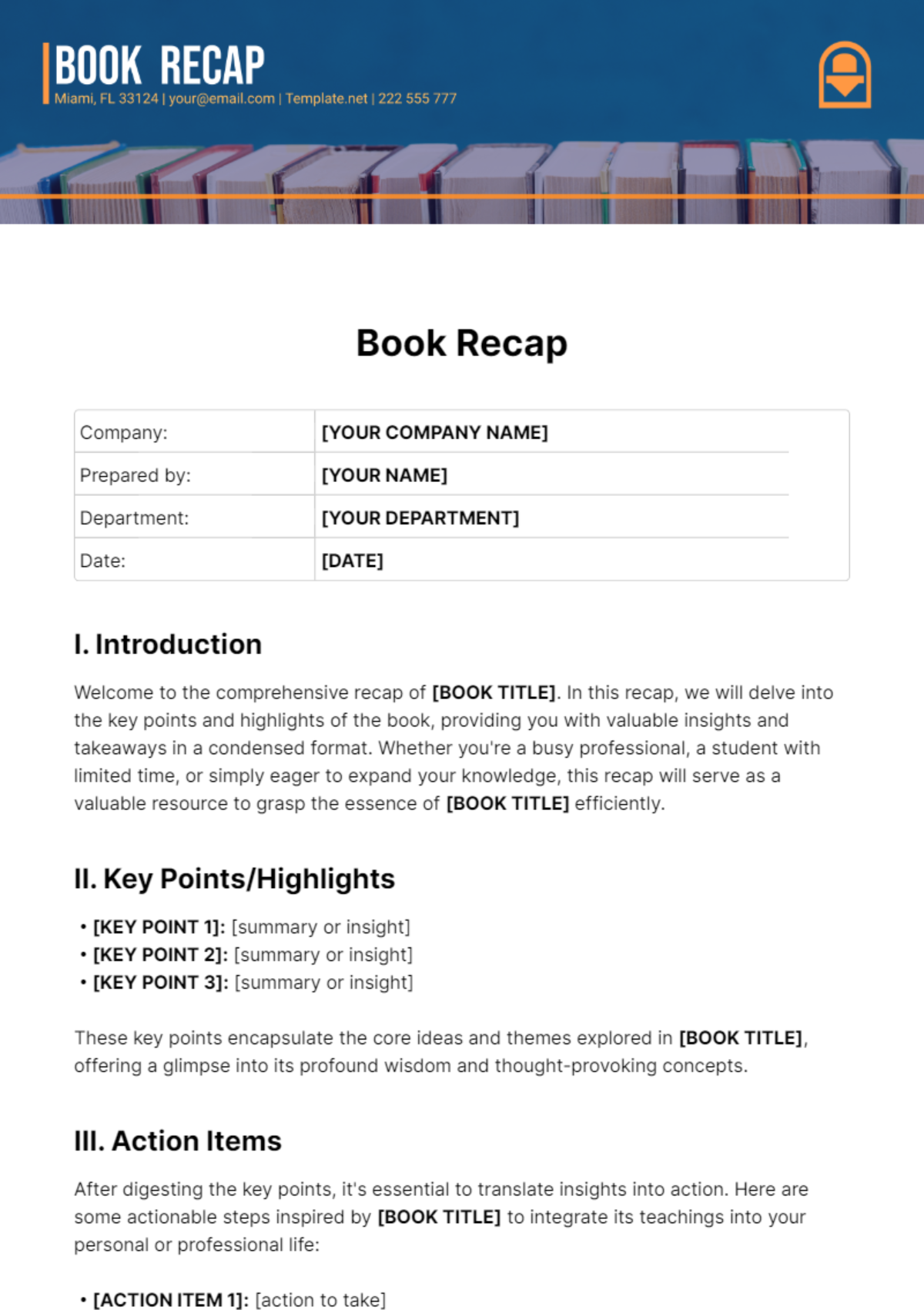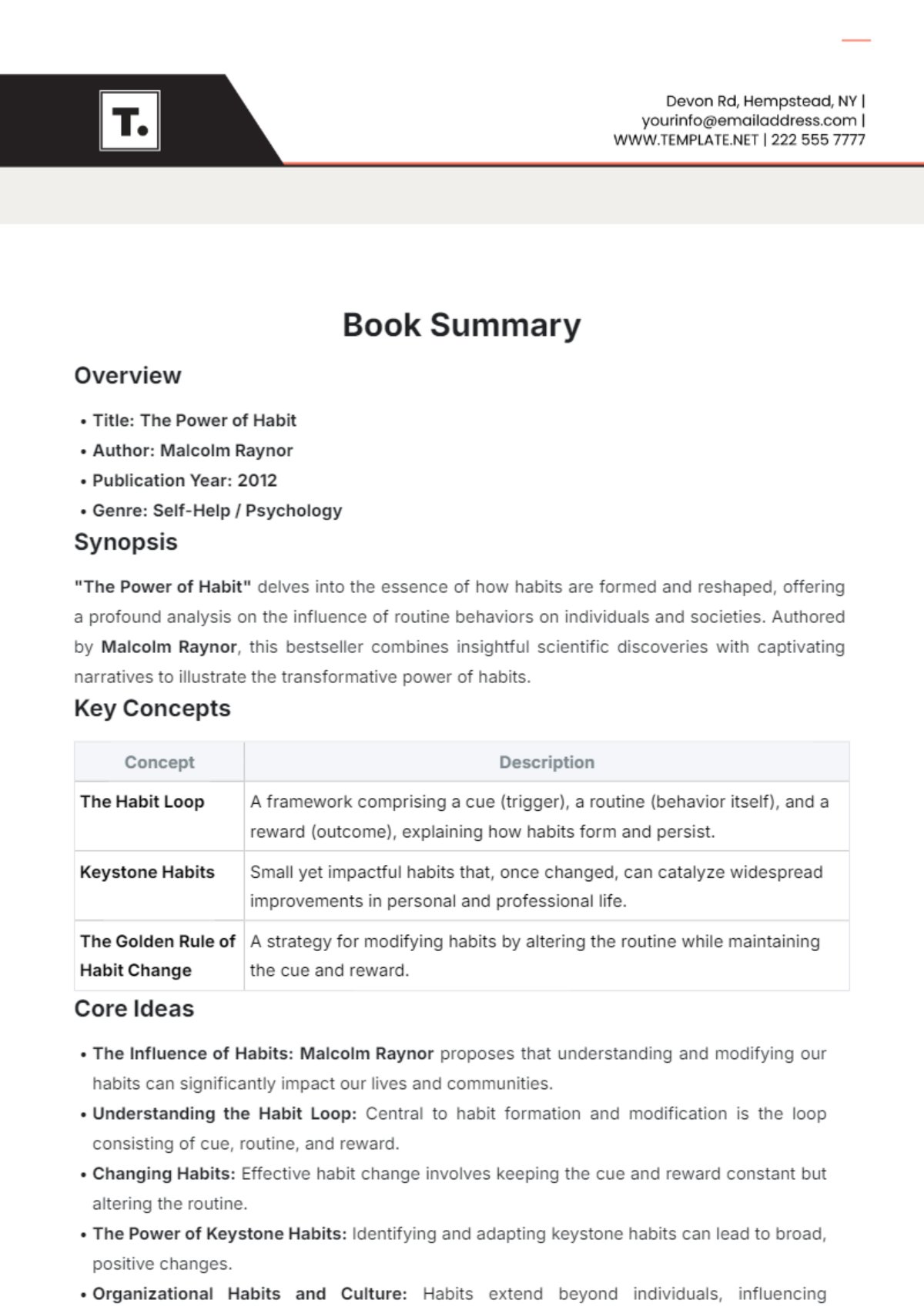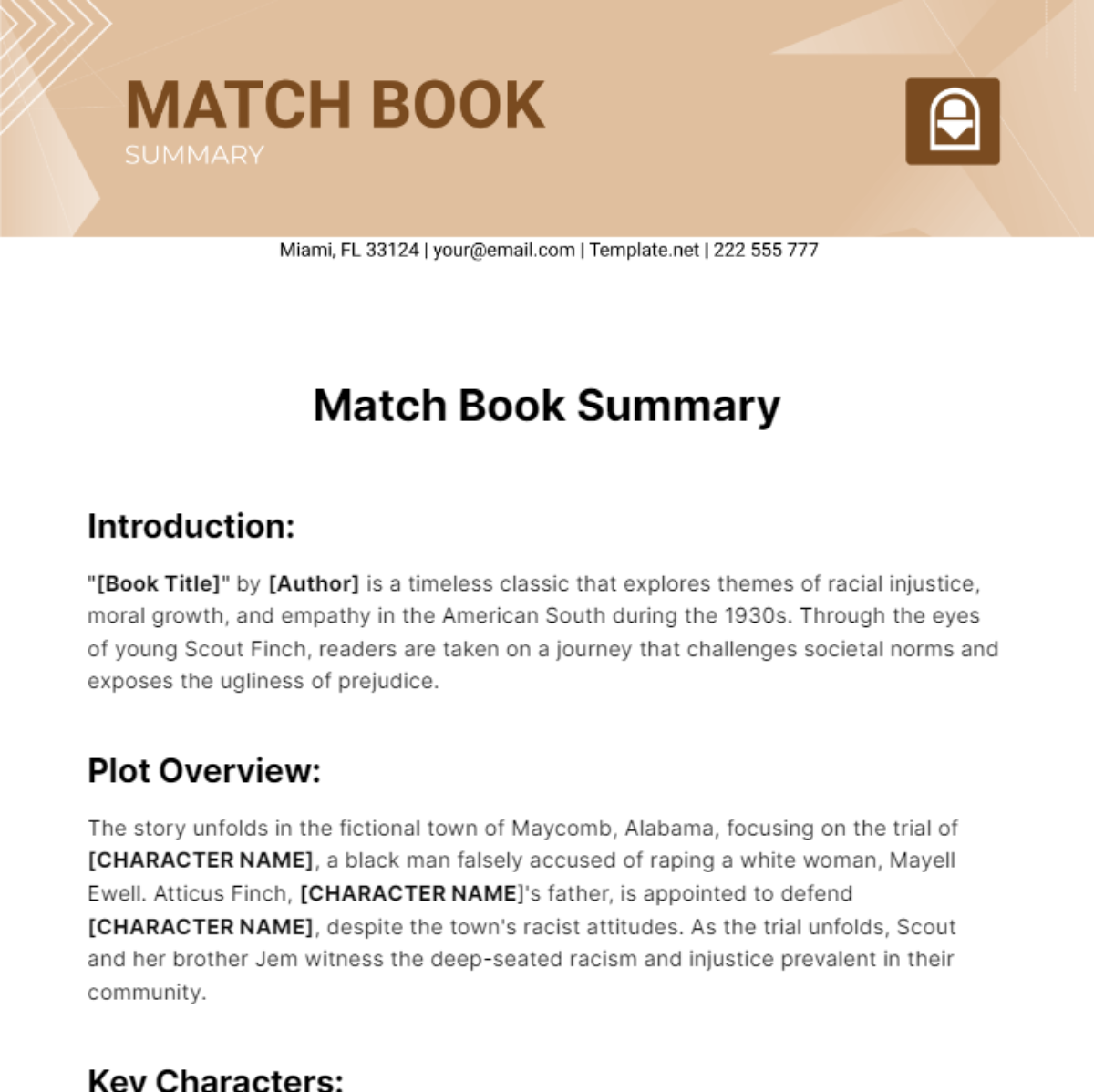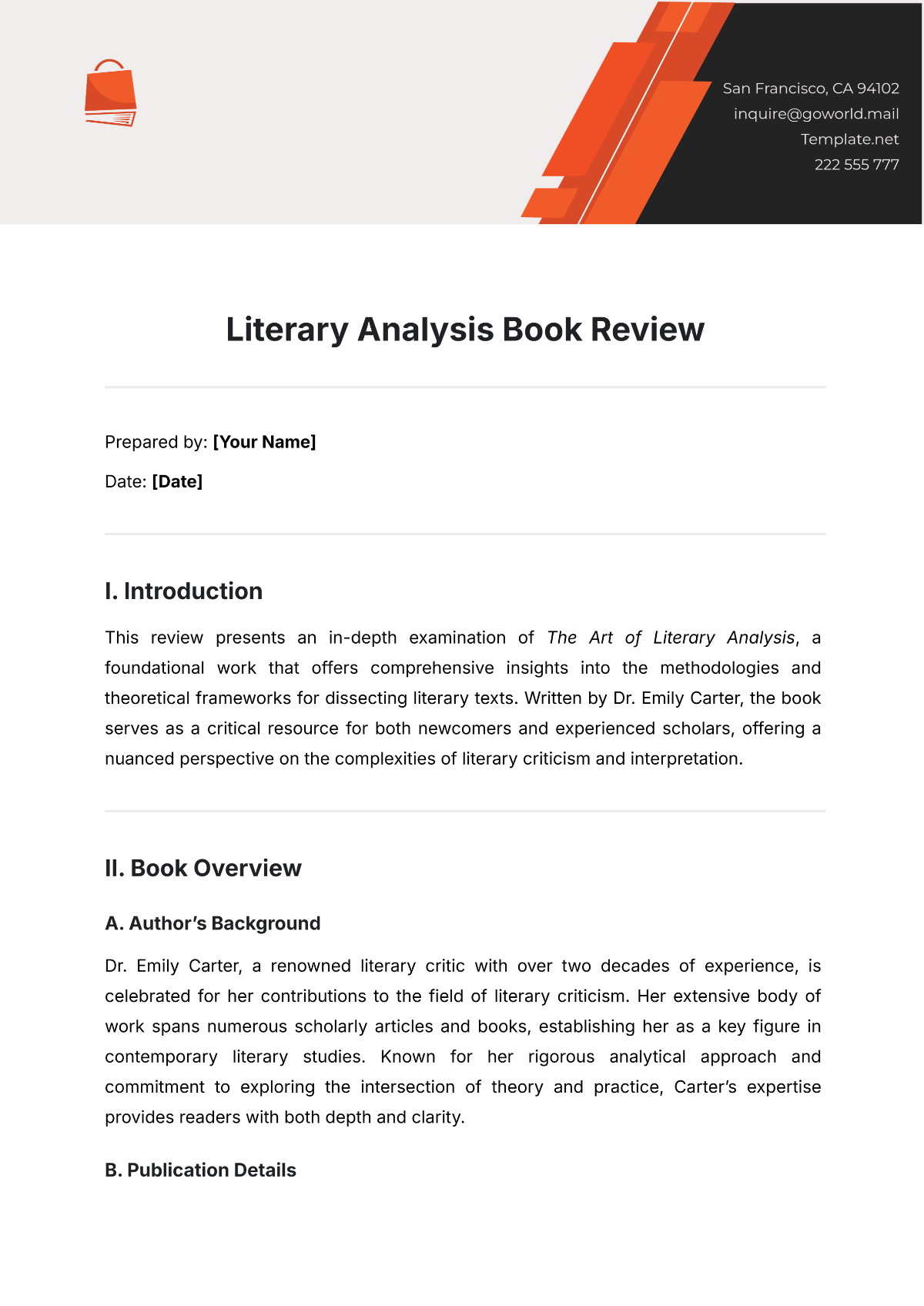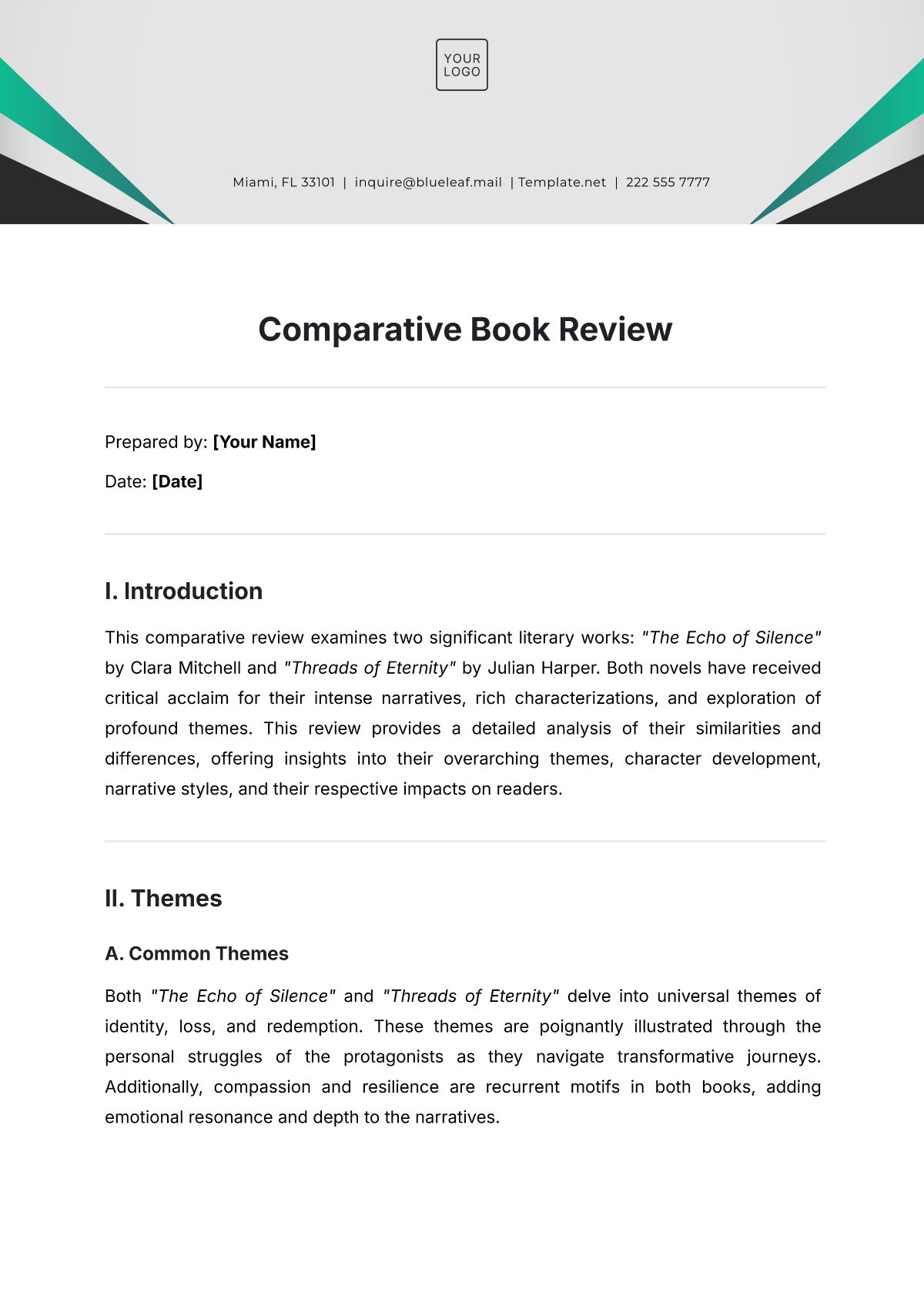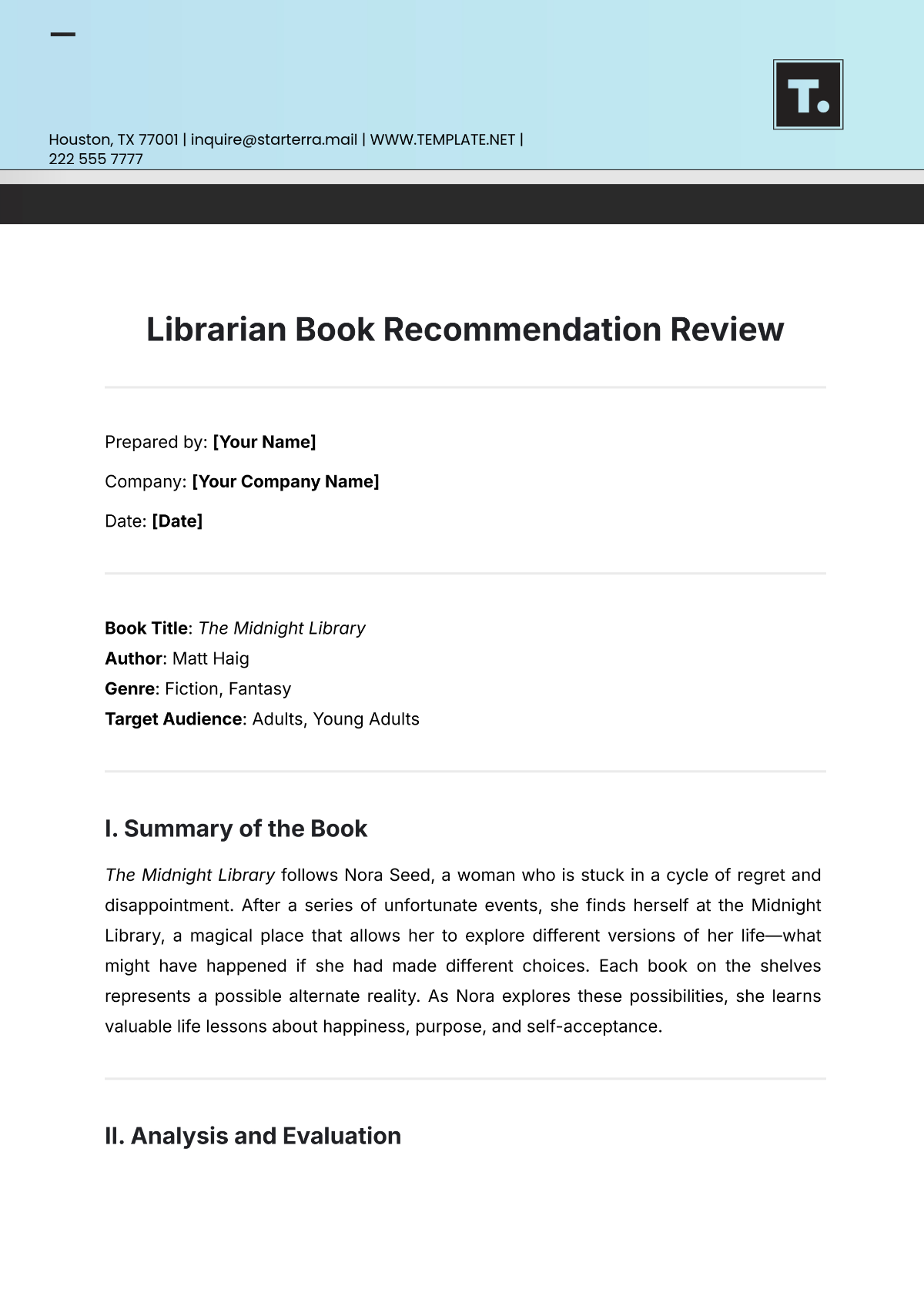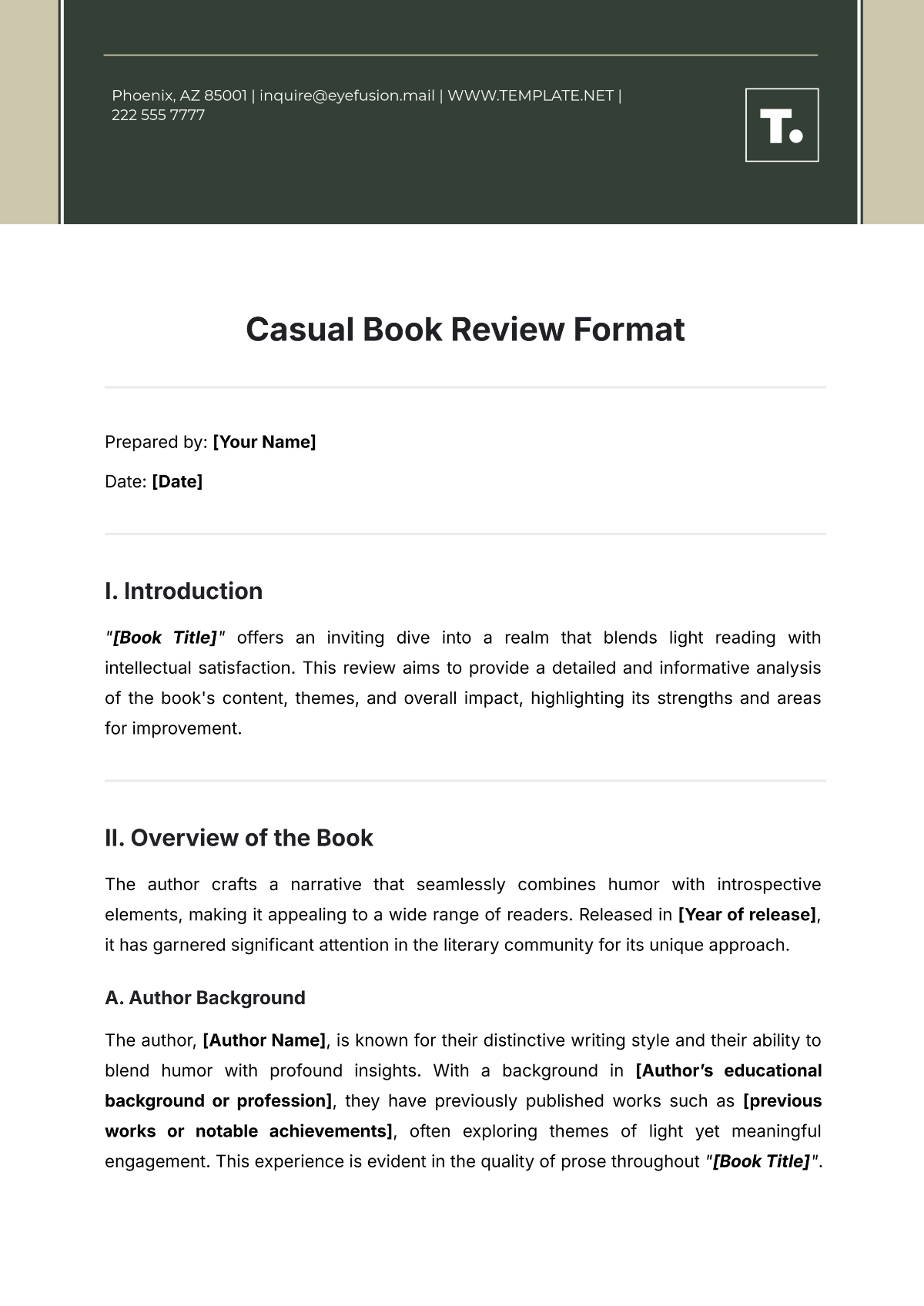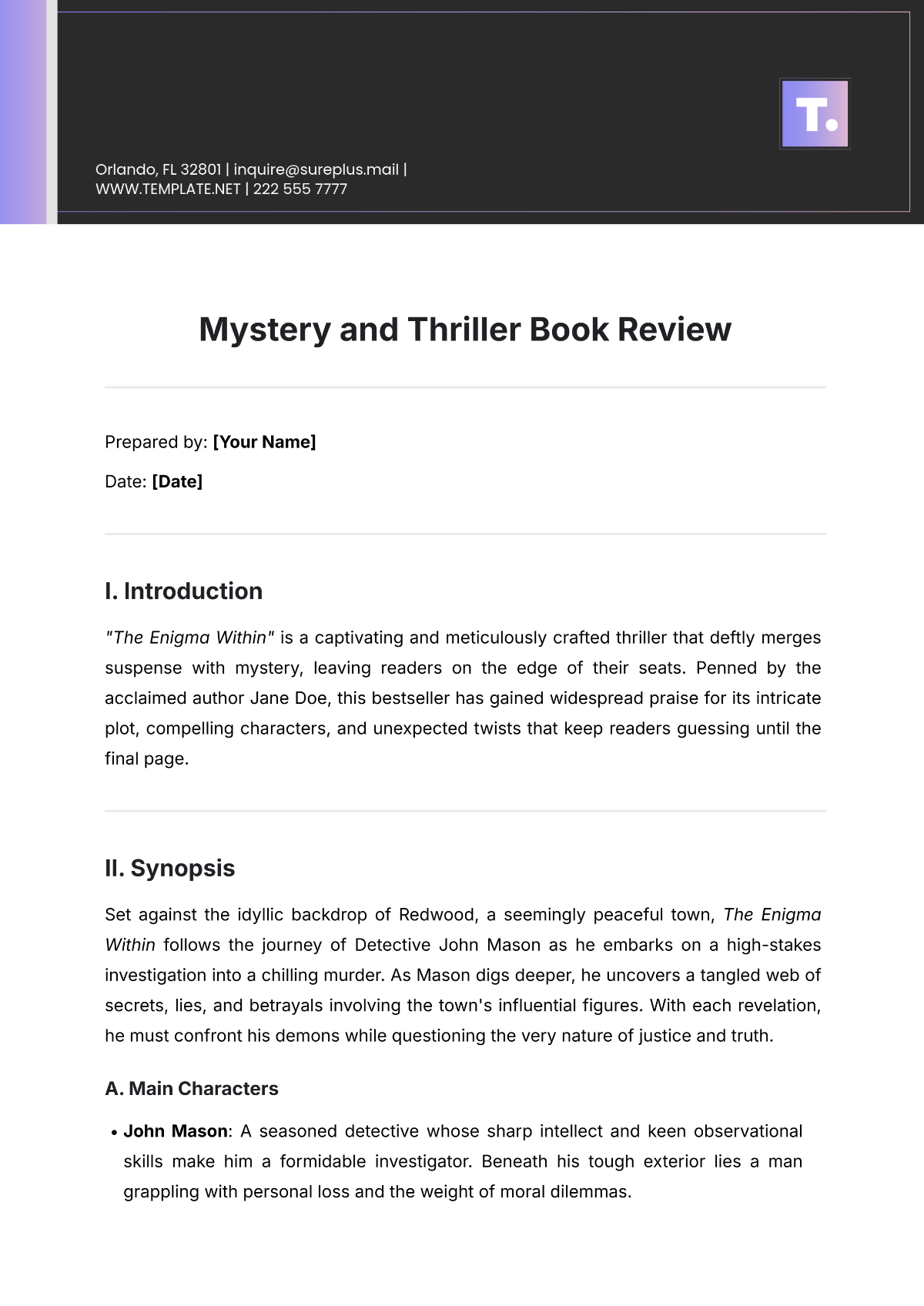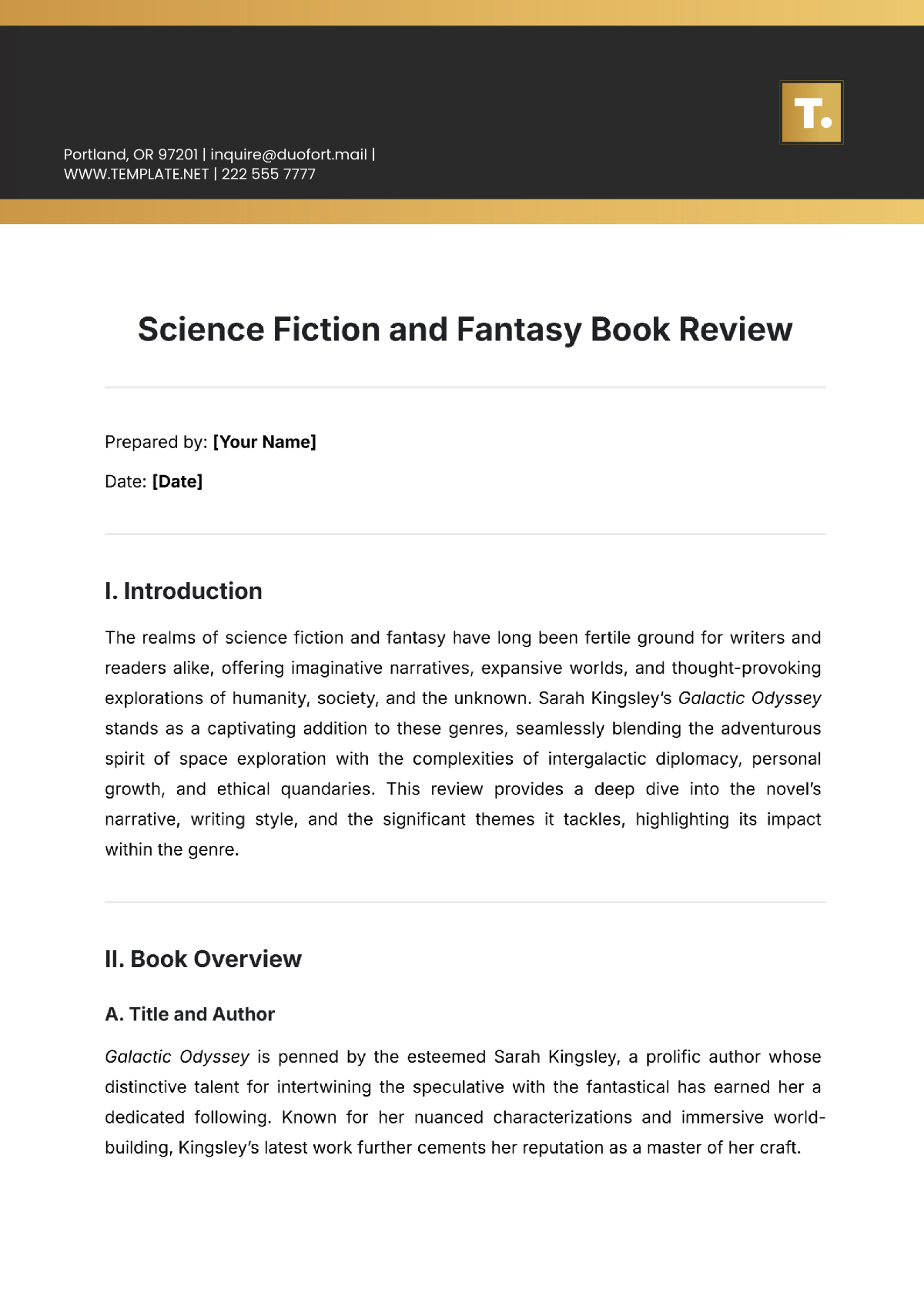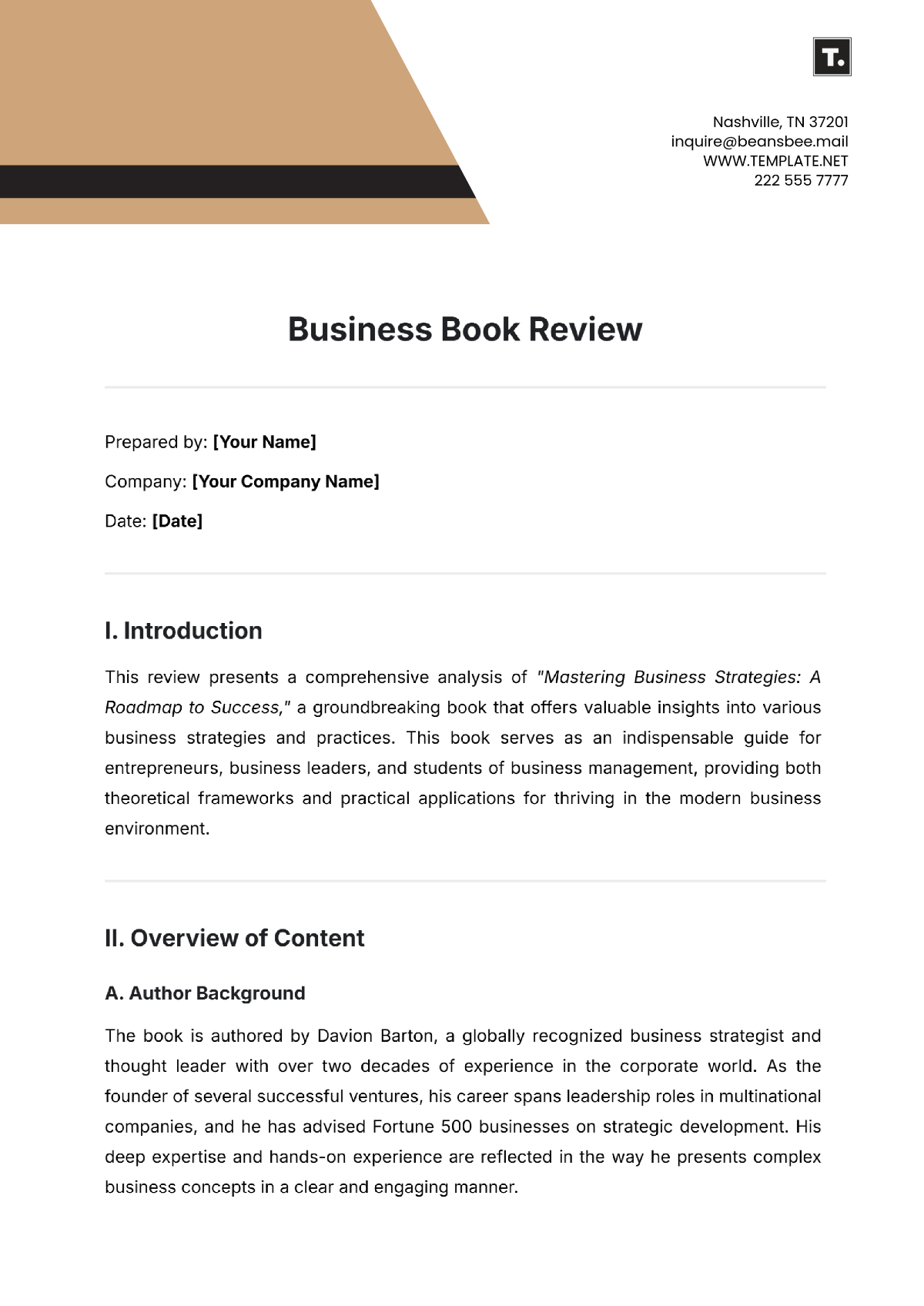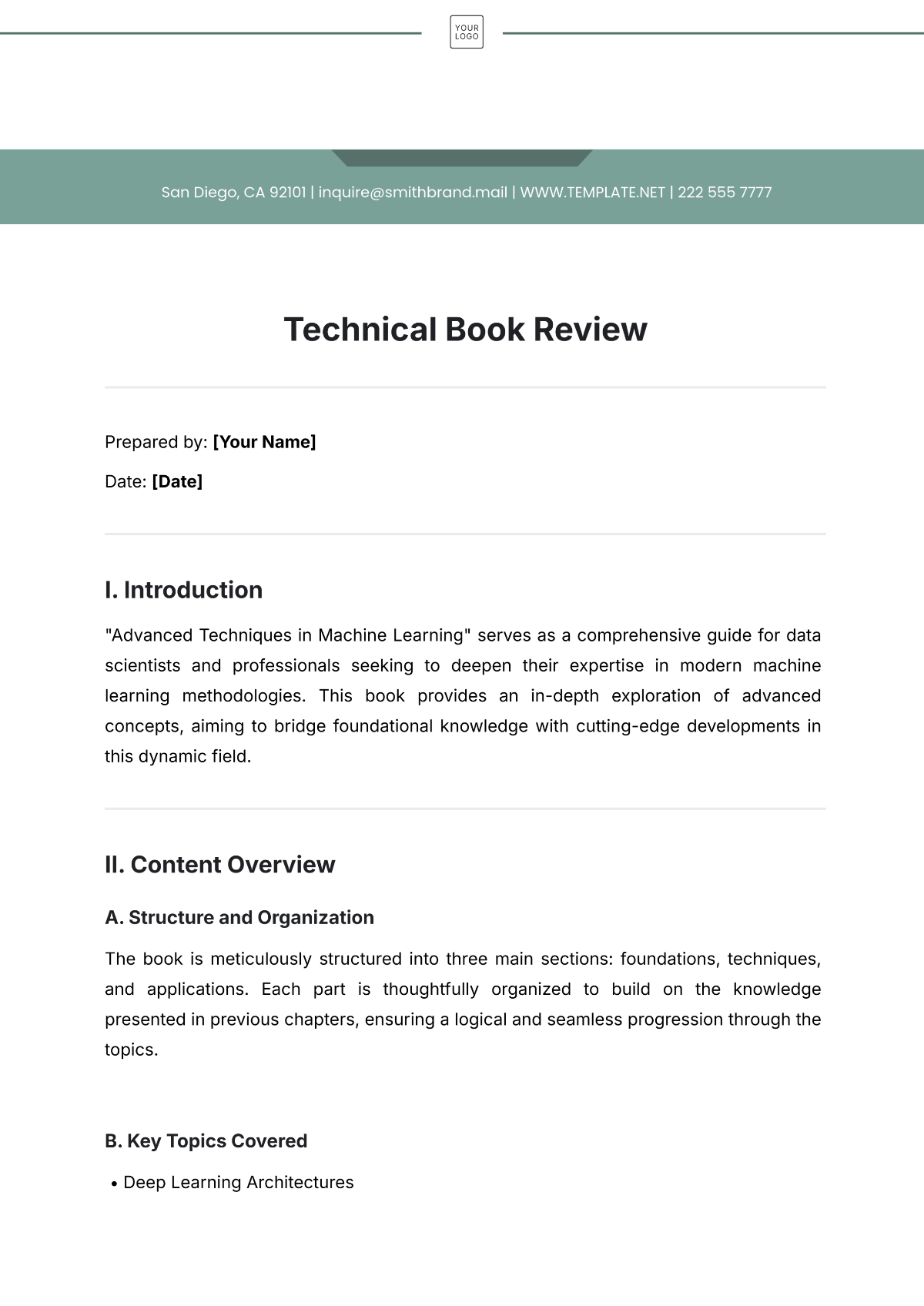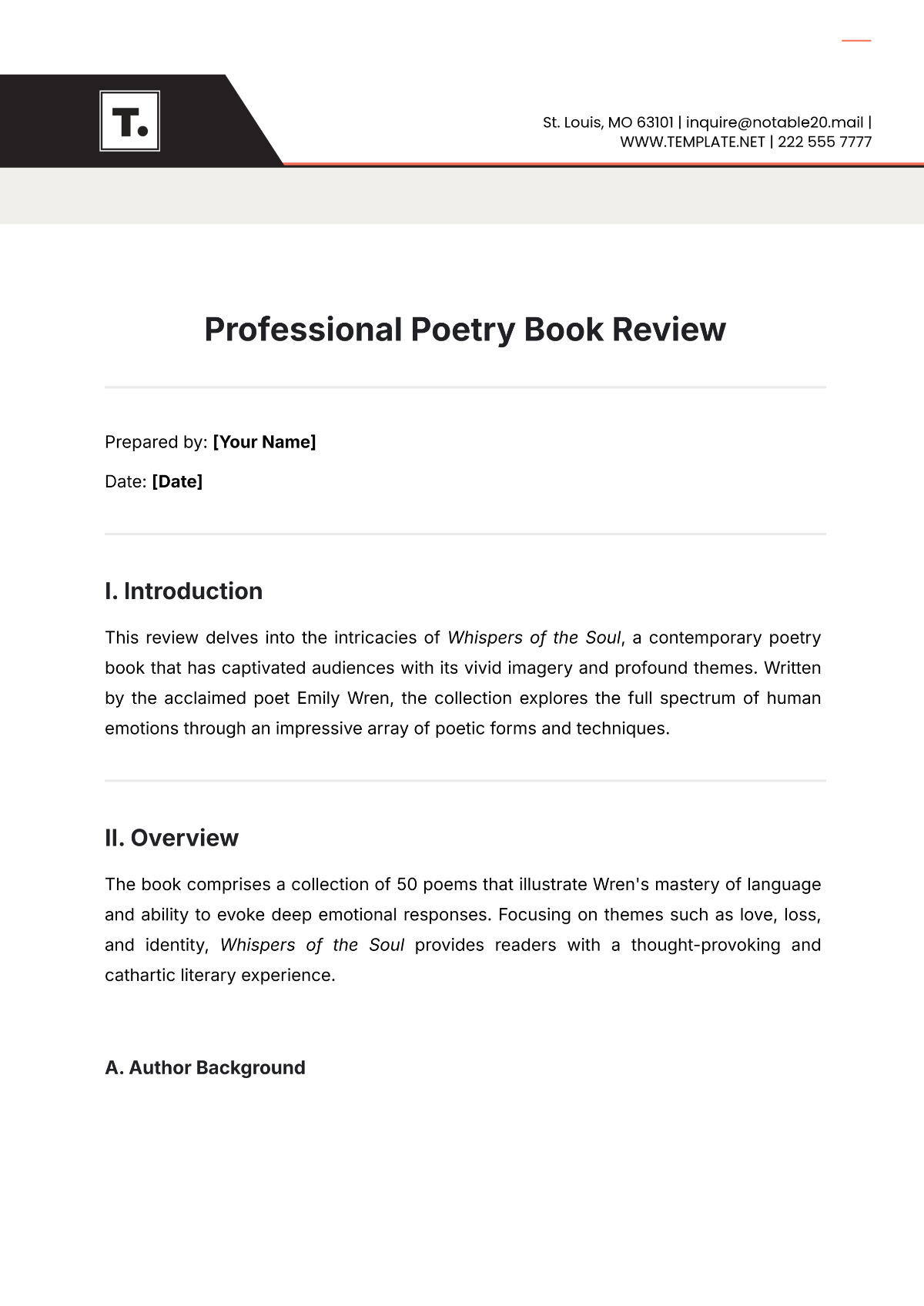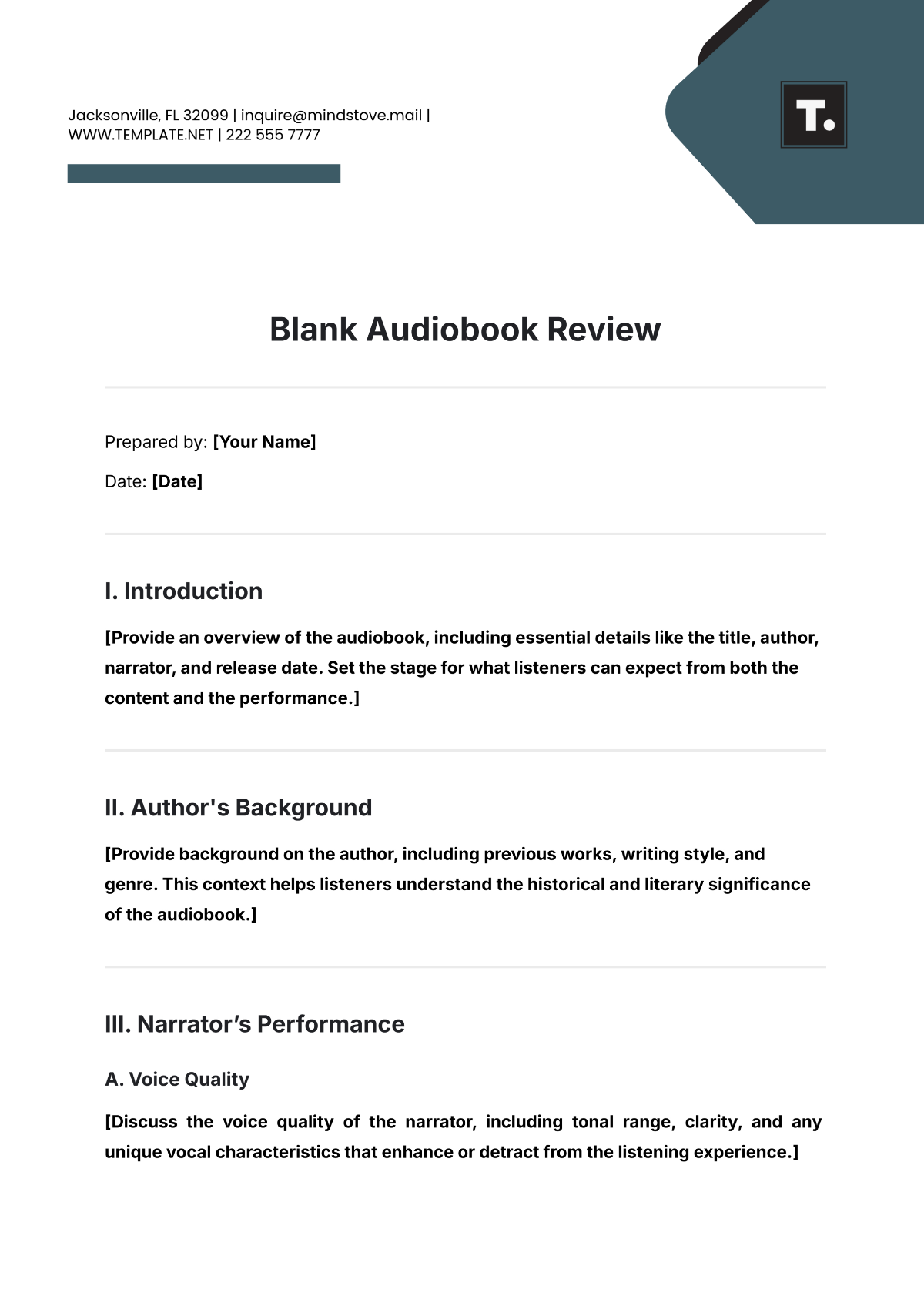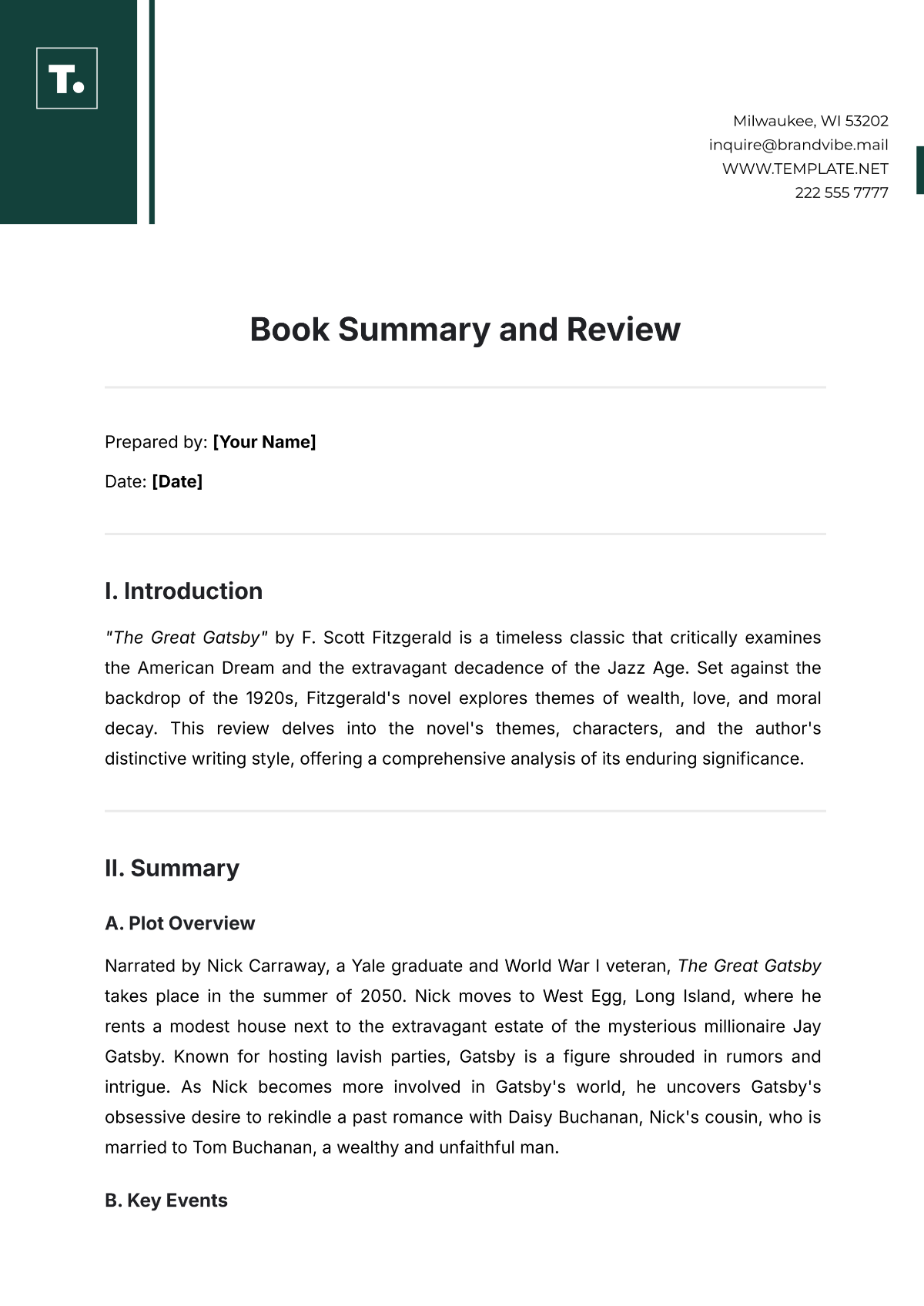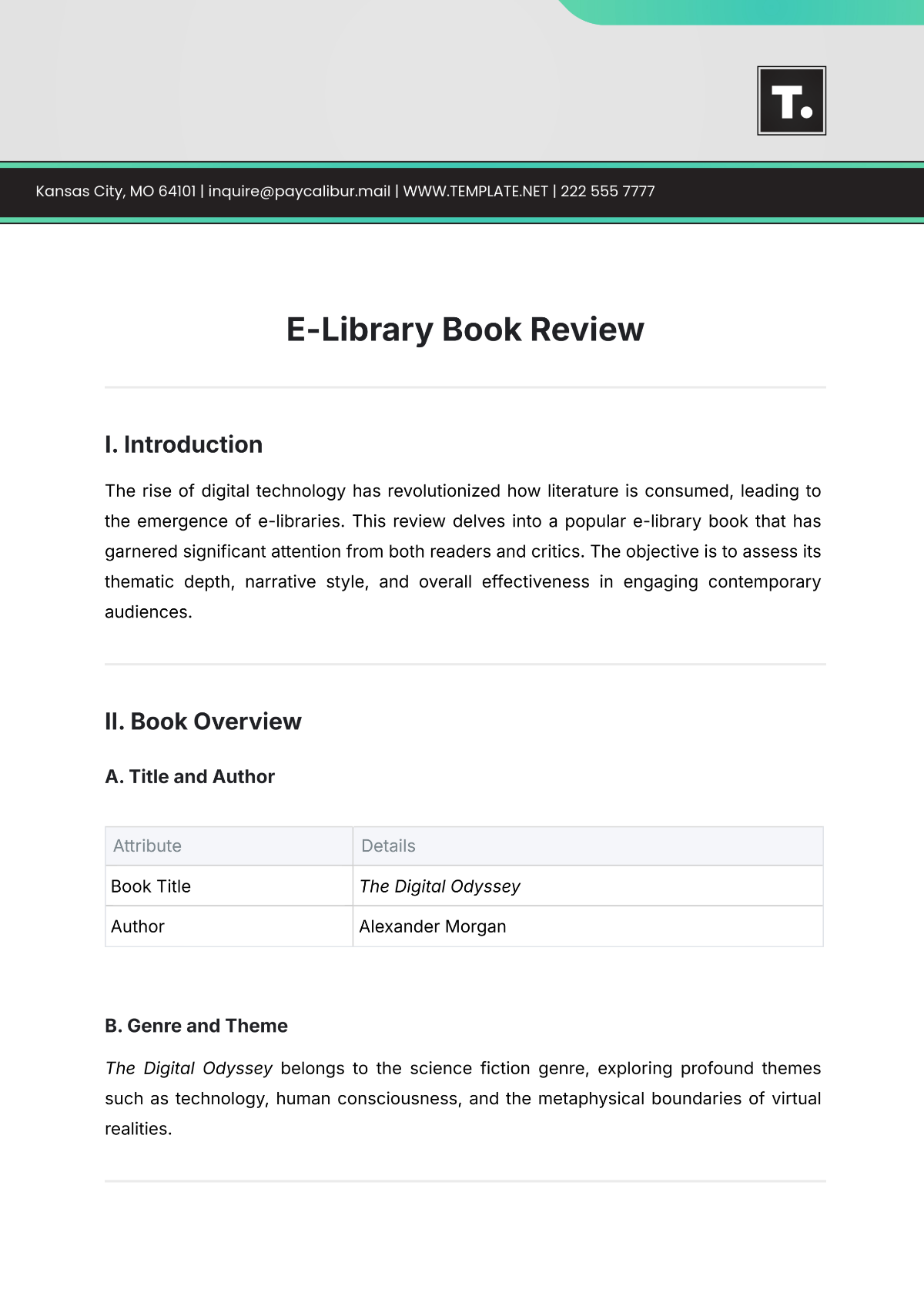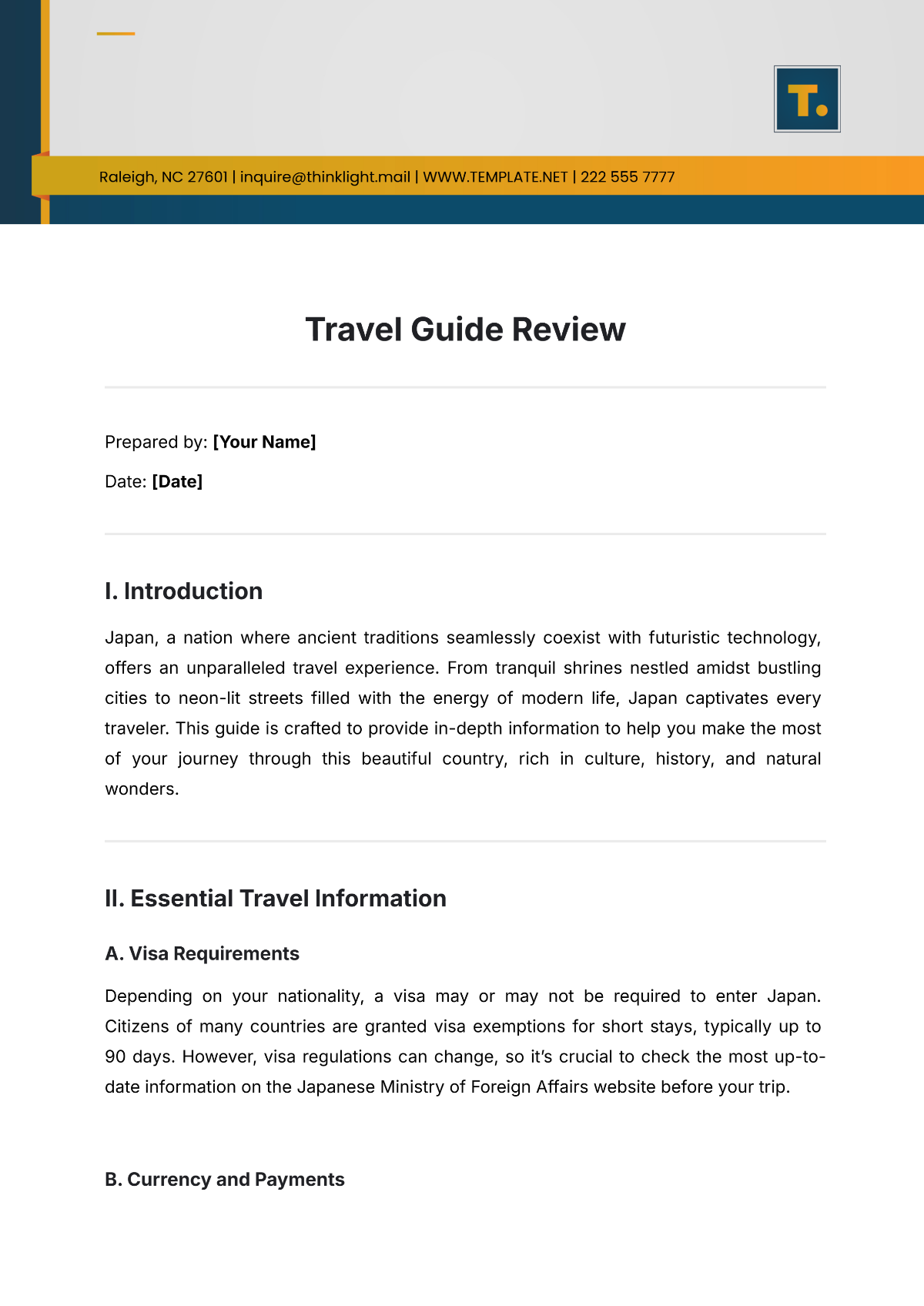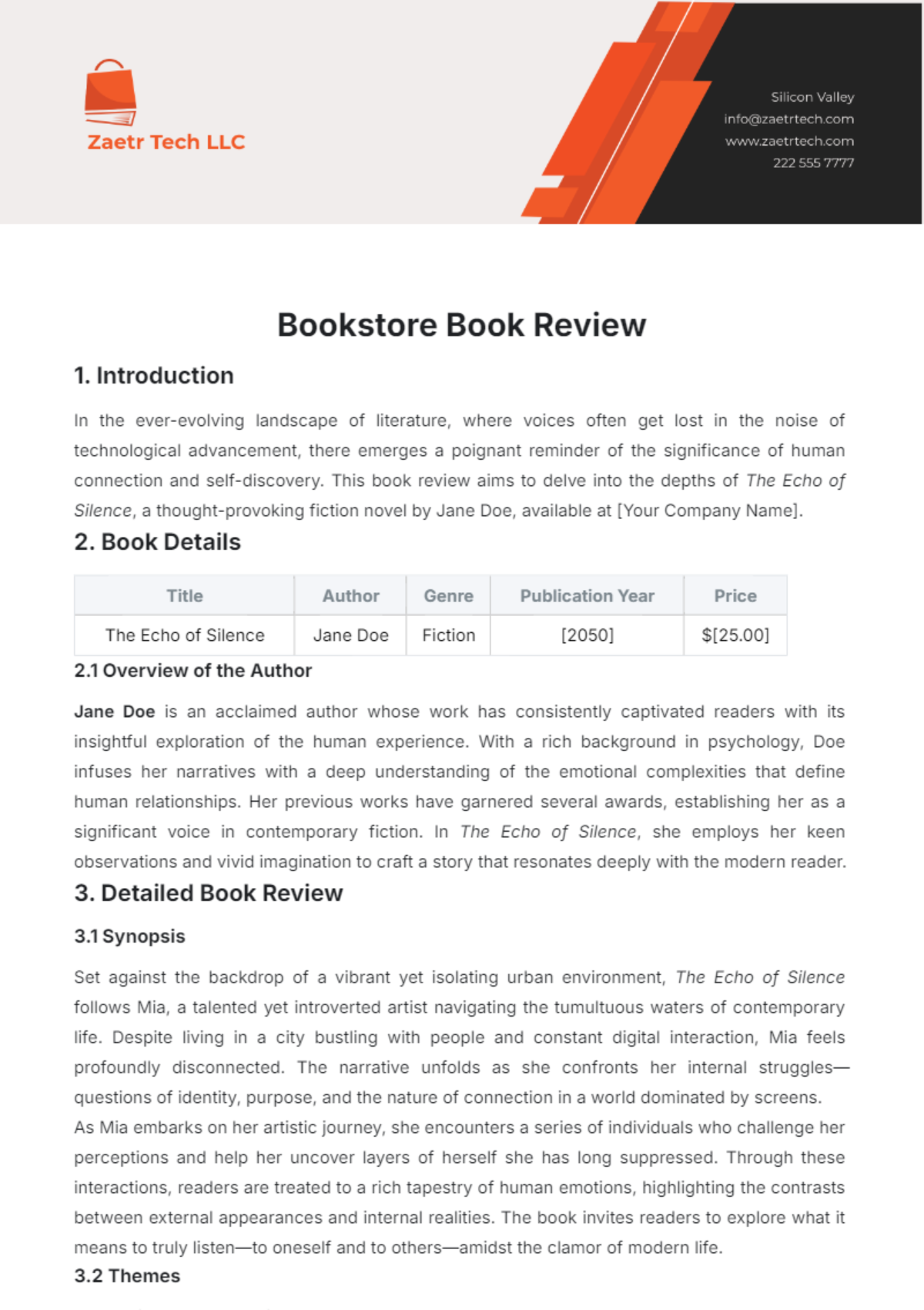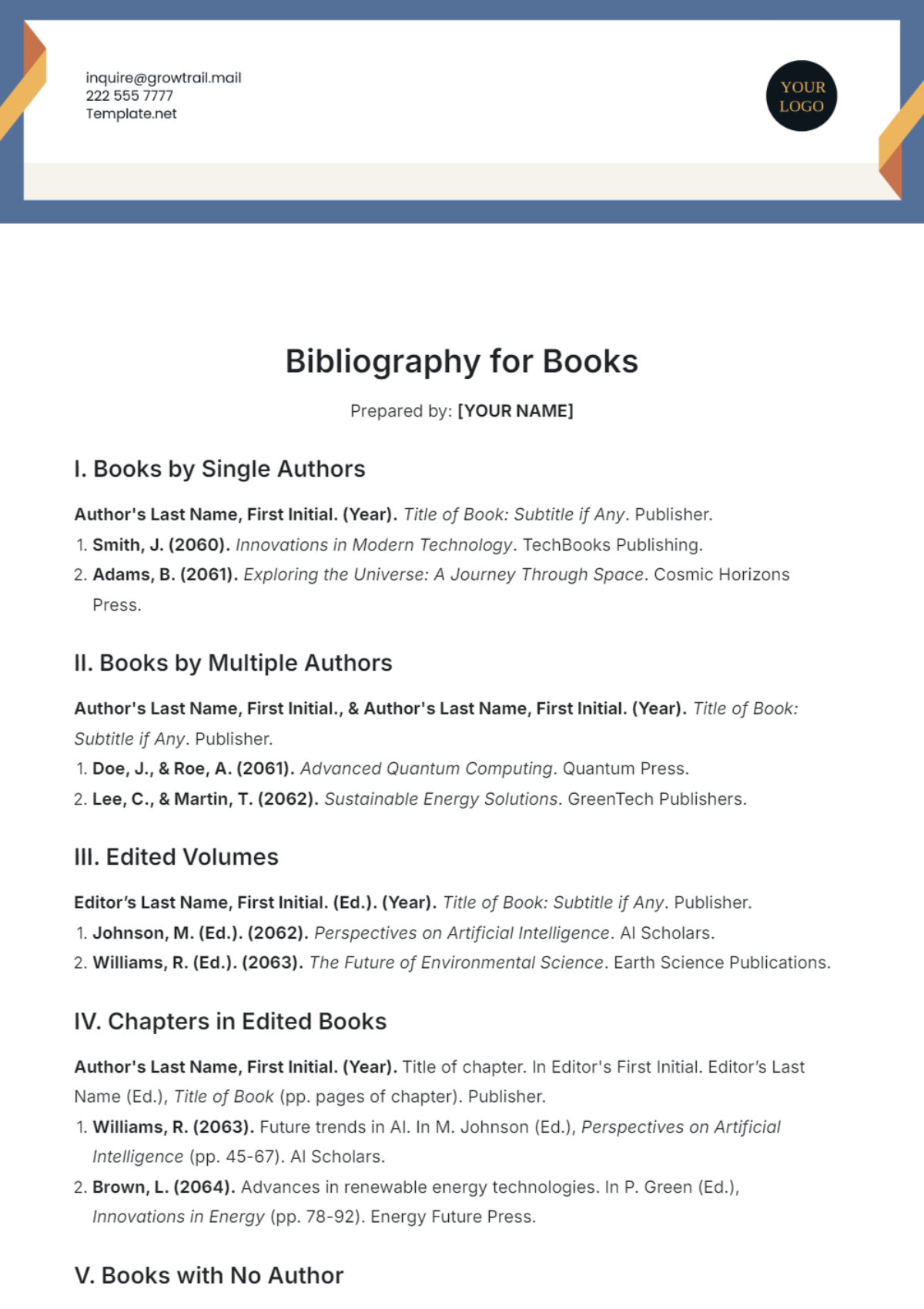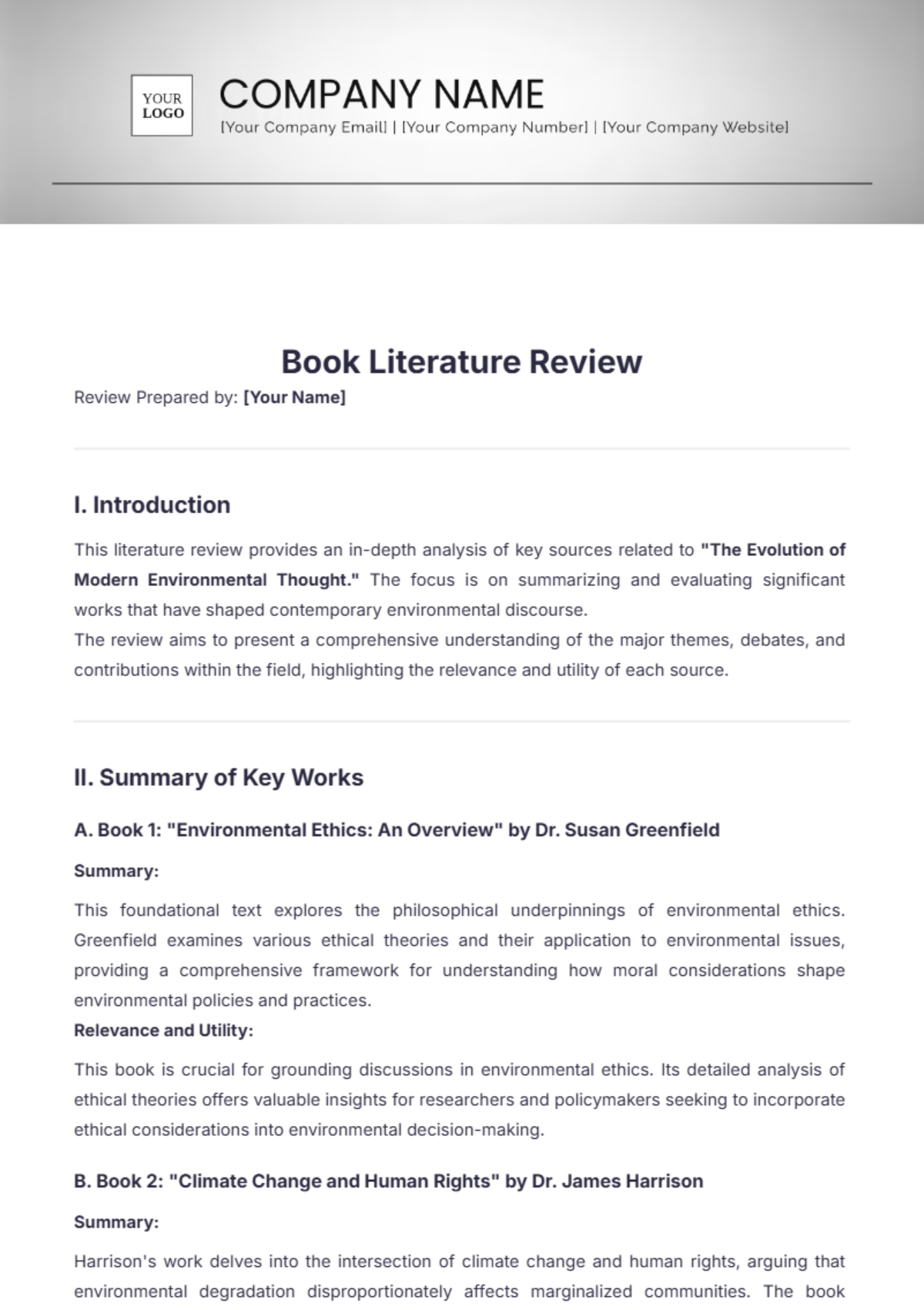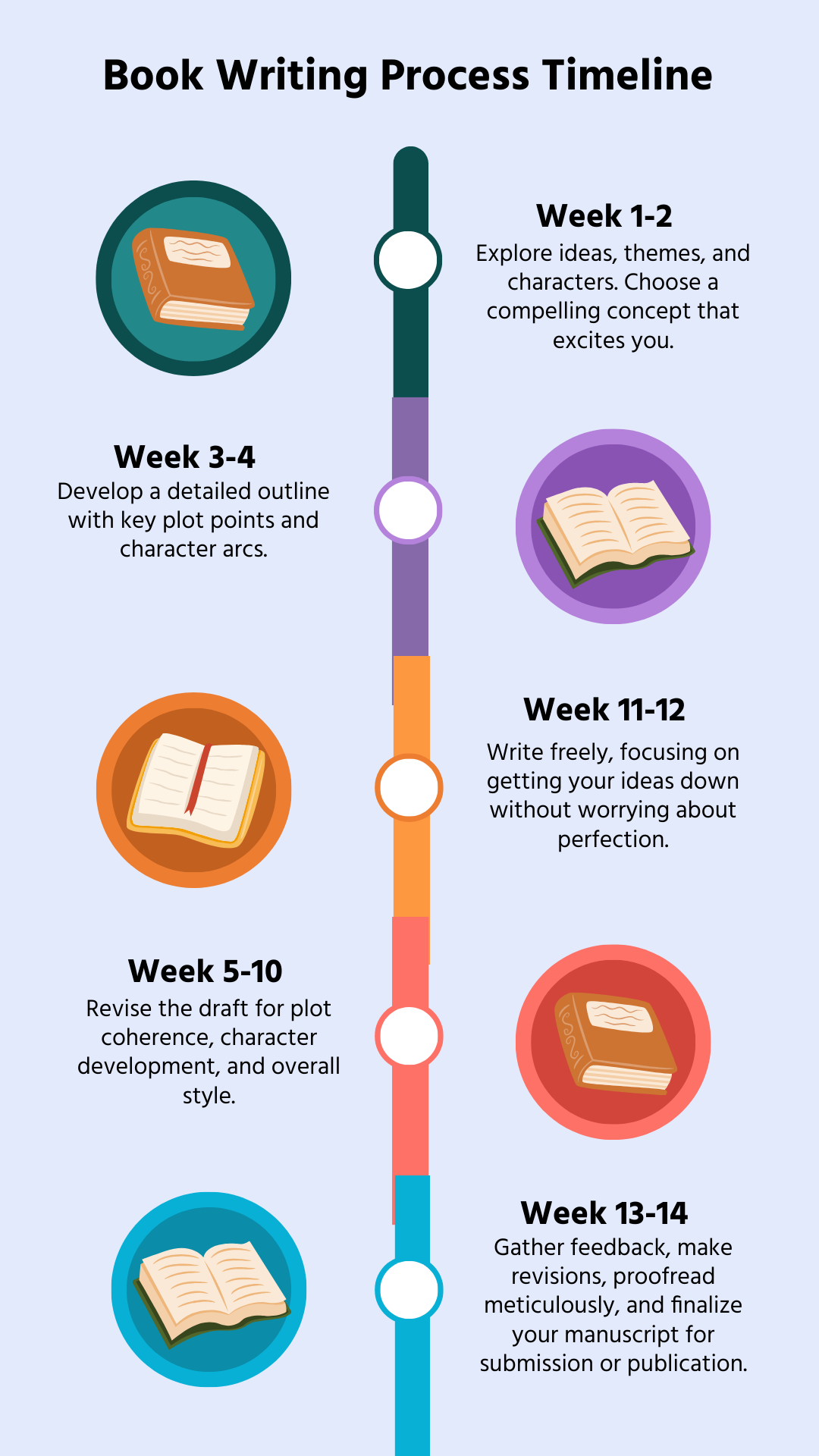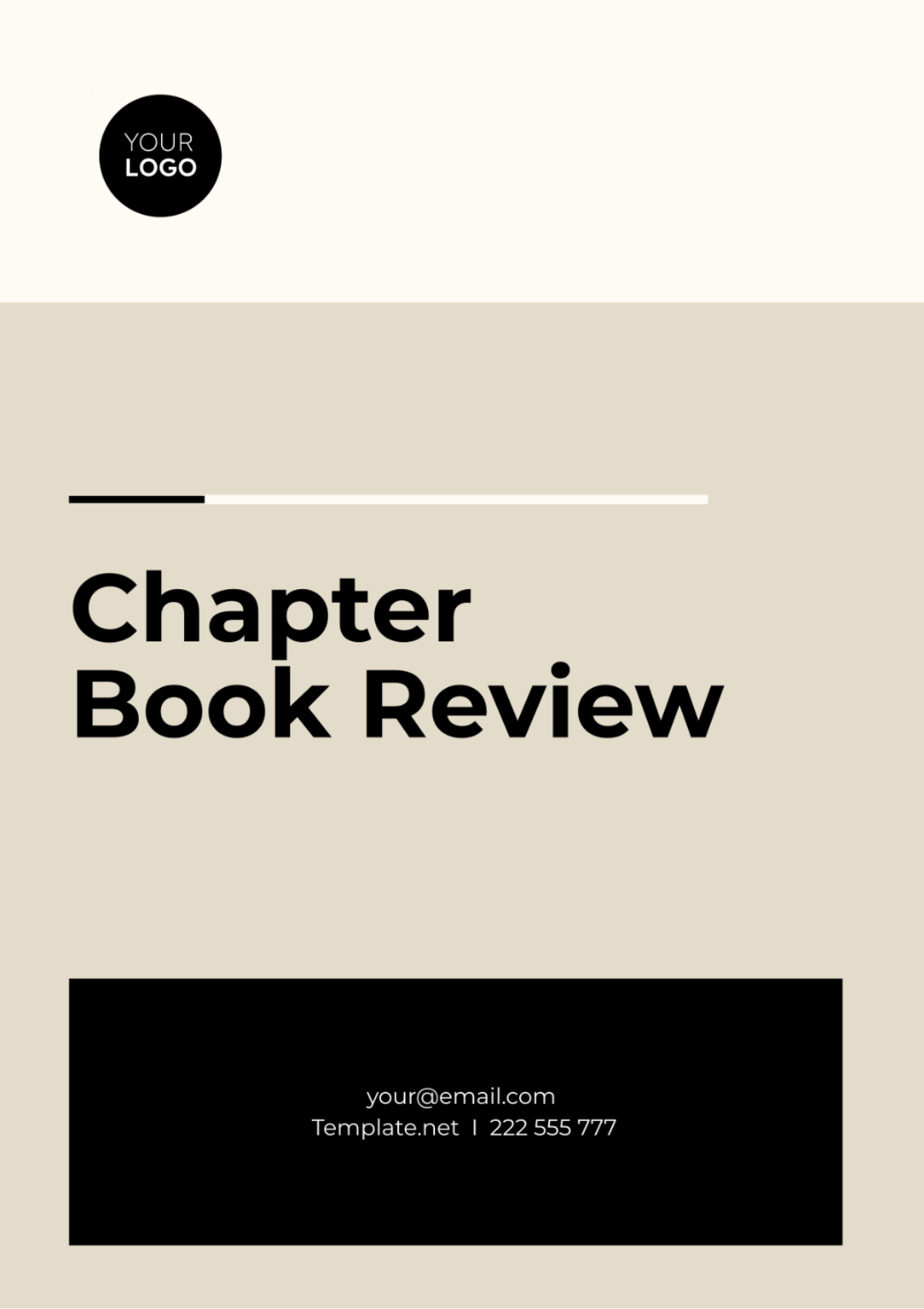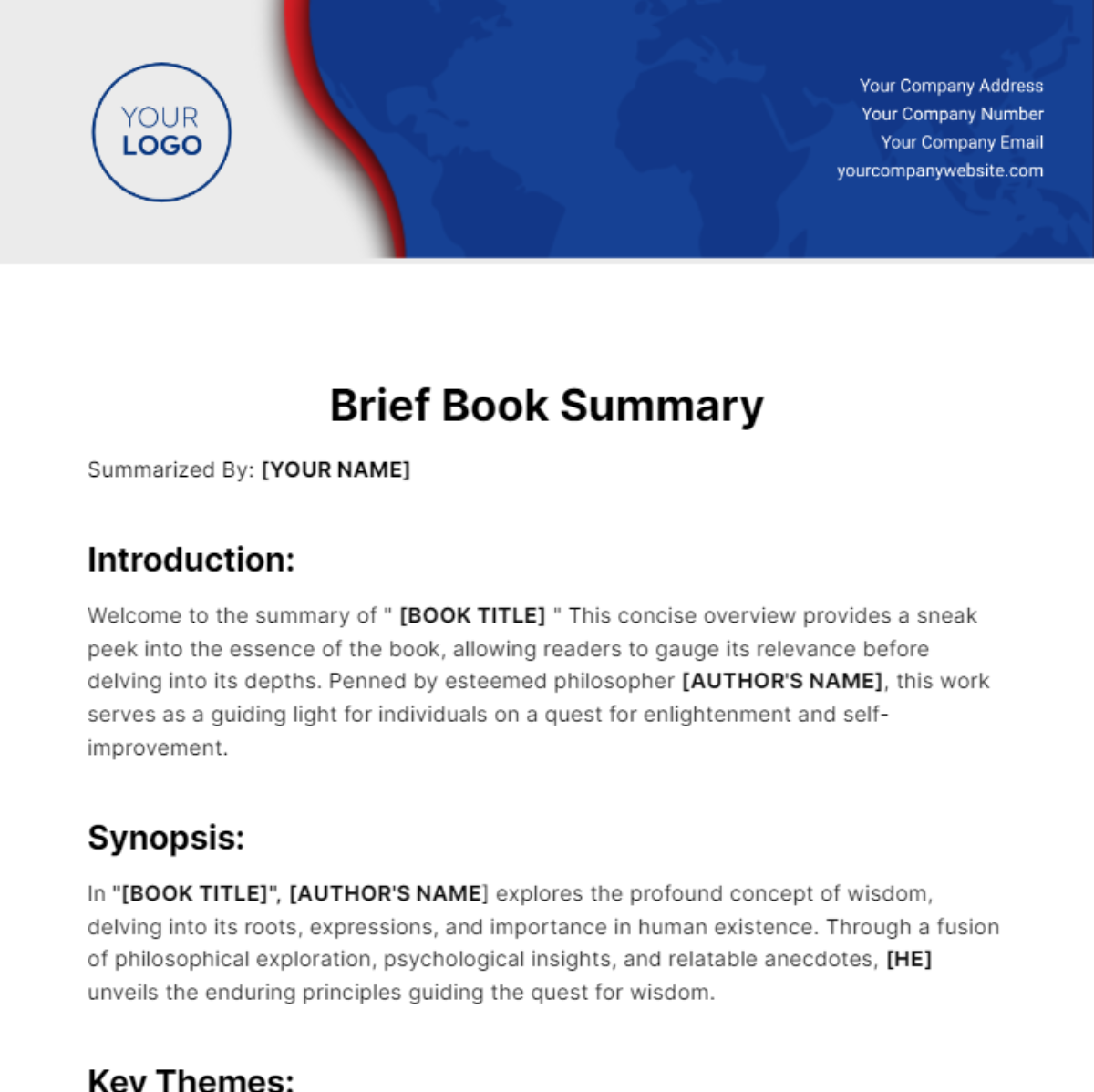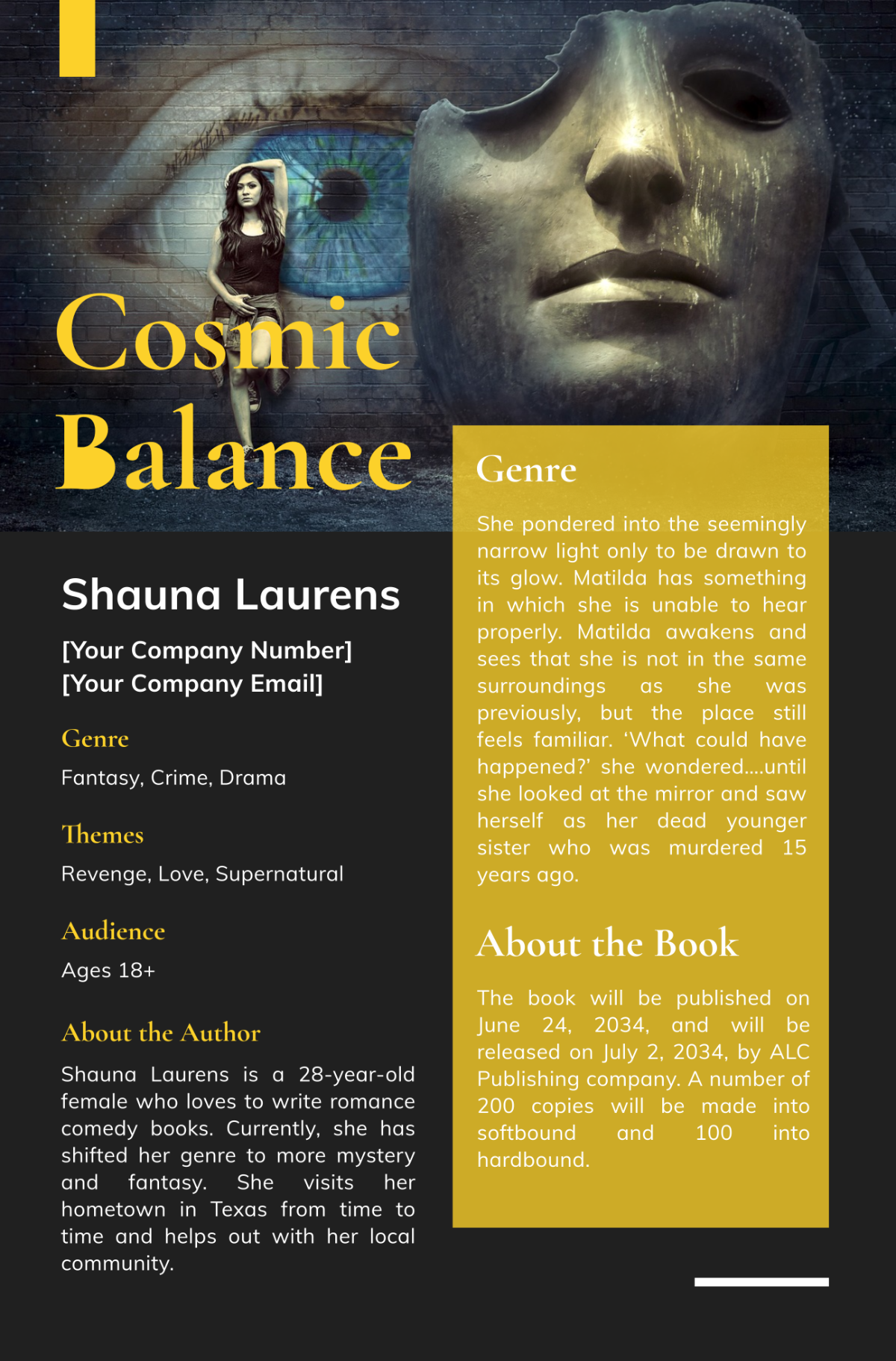Chapter Book Review
Name: | [YOUR NAME] |
Company: | [YOUR COMPANY NAME] |
Department: | [DEPARTMENT] |
Date: | [DATE] |
II. Introduction
This section provides a summary of the book’s purpose, its central theme, and a brief overview of the contents. In reviewing the book [BOOK TITLE BY BOOK AUTHOR], we will delve into the structure of the book, the effectiveness of its arguments, and the clarity of its outcomes.
The importance of this review rests on its ability to convey the book’s value to potential readers, offering insights into how and why it might be an essential addition to their reading list. This will include an examination of key chapters and any relevant historical context or related research discussed in the book.
III. Summary of Content
The book is divided into several chapters, each outlining significant aspects of [BOOK'S MAIN TOPIC]. The sections progress from introducing basic concepts to exploring more complex ideas, which are summarized here:
Chapter 1: Overview and Introduction – Setting up the stage and expectations.
Chapter 2 to Chapter N: Detailed exploration of each topic, followed by a critique and discussion of its application.
This summary helps provide a skeleton of the book's structure, aiding in the understanding of how the author builds up arguments or shares insights.
IV. Critical Analysis
This section dives deeper into the book, examining the strength and weaknesses of the arguments presented. It critically assesses the methodologies, evidence, and conclusions drawn by [BOOK AUTHOR].
Special attention is given to the originality of the content and its relevance to current issues or perspectives within the field. This will include:
The coherence of the author's arguments and the logical sequence of ideas.
The significance and impact of the research or perspectives shared in relation to existing literature.
V. Conclusion
In the conclusion section, summarize your overall assessment of the book and provide a final recommendation to readers. Reflect on the strengths and weaknesses discussed in the review and offer your perspective on whether the book is worth reading. Consider the [TARGET AUDIENCE] and their preferences, as well as the broader literary context, when formulating your recommendation. End the review with a compelling closing statement that leaves readers with a clear impression of your thoughts on the book.
VI. Bibliographic Information
To assist in locating the book and referencing it in academic or professional settings, the following bibliographic details are provided:
Title: | [BOOK TITLE] |
Author: | [BOOK AUTHOR] |
Publisher: | [PUBLISHER] |
Publication Date: | [PUBLICATION DATE] |
ISBN: | [ISBN NUMBER] |
